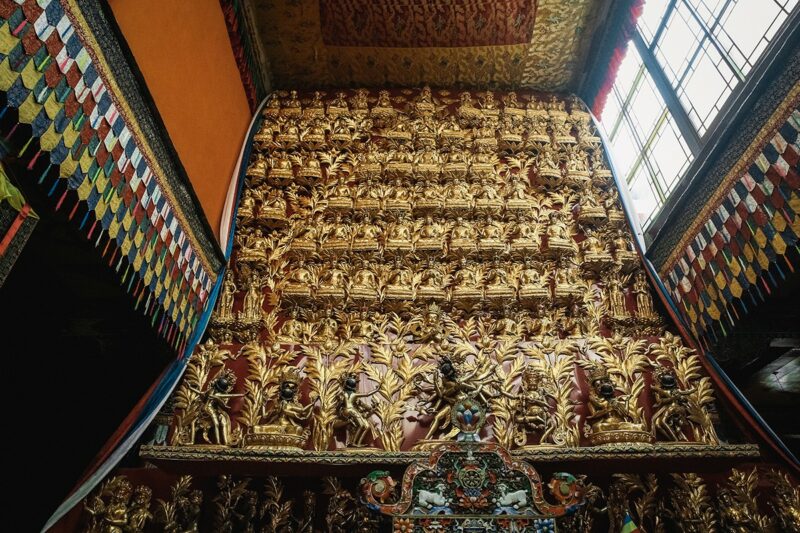ที่มาhttp://bigpicture.ru/?p=585449
By cholarat boonprachuab m1/1 no3
Almost all the monasteries, gets in our way, belonged to the most common Buddhist school Gelugpa. But in the last day in Tibet, we went to one of the most important monasteries in another school Kagyu. It can be considered one of the jewels of Tibet. He was the most important point of our journey. It is not included in the standard tourist route, and for his visit we received a separate permission from the Chinese authorities and pay extra for the trip.
This article completes our series of stories about traveling on the most mysterious places on Earth.
รูปภาพวัดใน ทิเบดครับ
ไม่มีเวลเเปลอ่ะขอเเปลเเบบงายๆๆว่าคือรูปโรงเรียนพระพุทธศาสนาครับ*--*
Sponsor post:Maine Coon Photo : Maine Coon kittens born in our kennel are moving into a new home after 2.5 months of age.
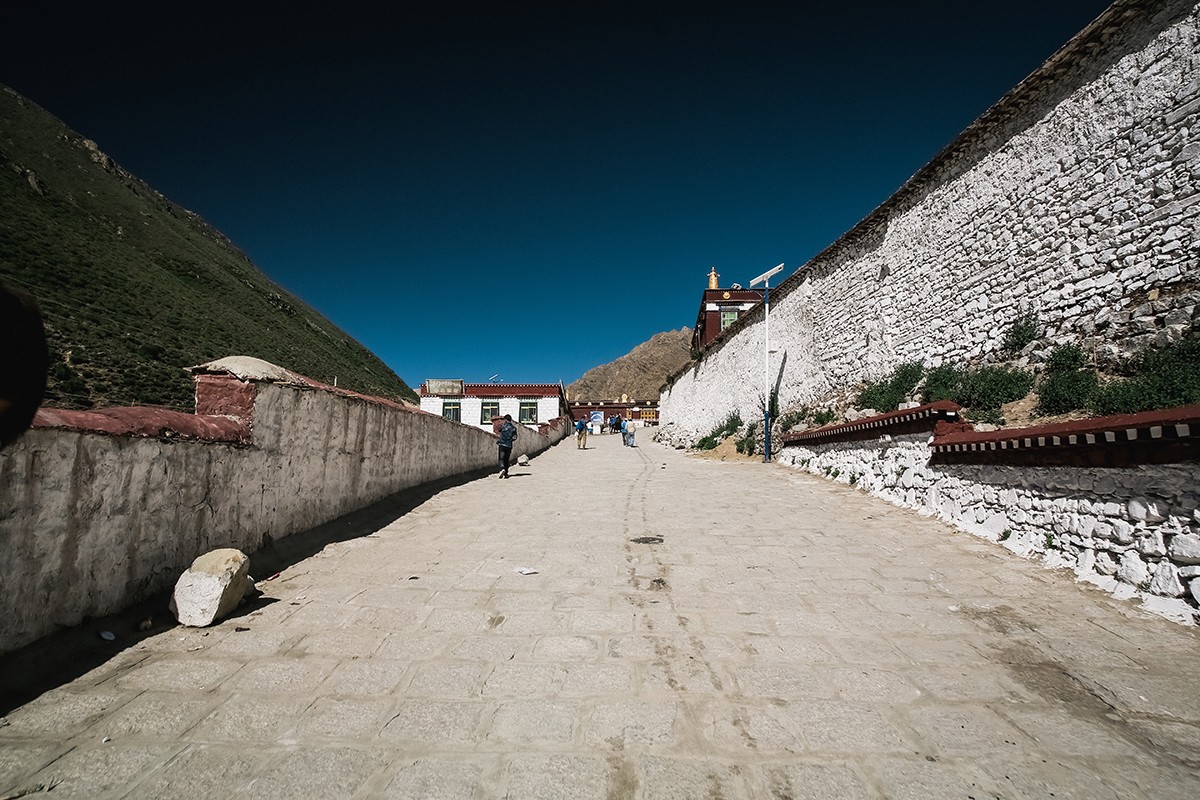
1. Tsurphu Monastery called, and a traditional location of the head of the school, the Karmapa, the king of all yogis. This monastery is very different from the others, which are more subject to the Chinese leadership. Here you can take pictures for free all but altars.There are few tourists, and those who come here, go consciously.
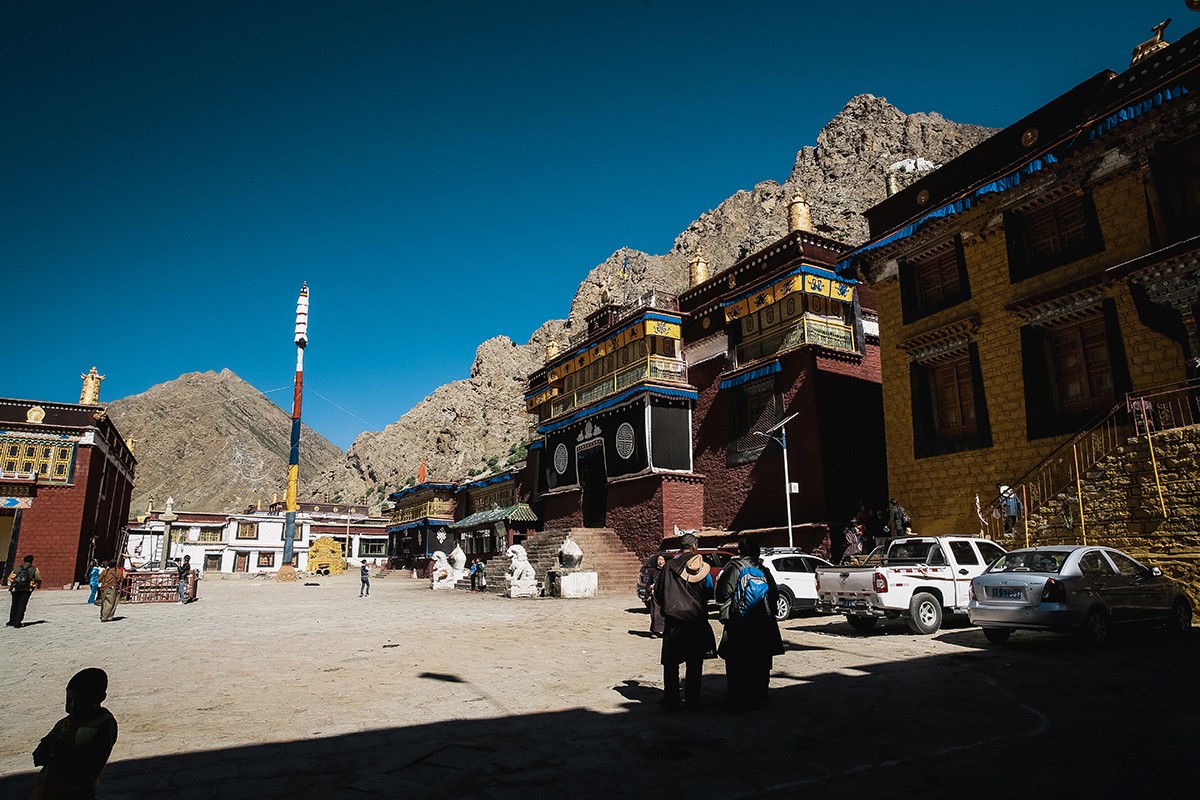
2. Tsurphu is located 70 km north-west of Lhasa in the windswept valley at an altitude of 4300 meters.

3. Built in 1159 his first Karmapa, Dusum Khyenpa.
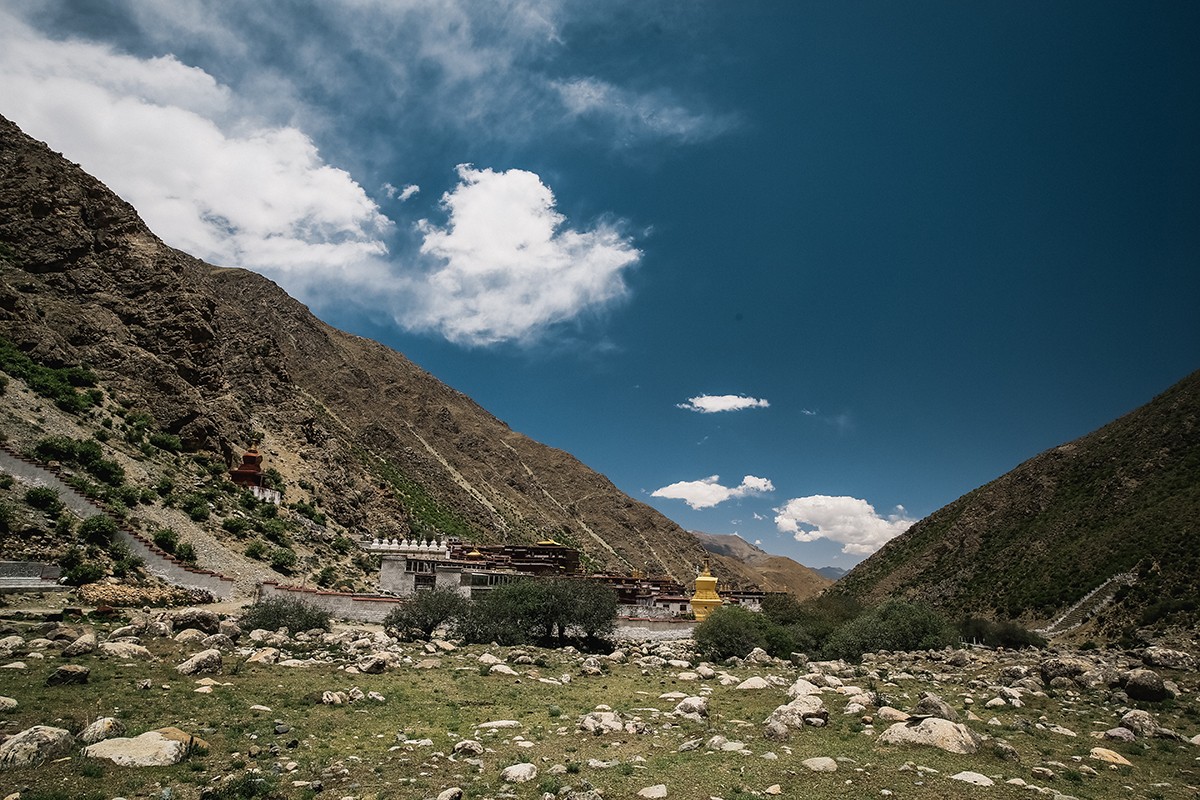
4. In this case, as in the case of the Jokhang, not without geomancy "SACE". Dusum Khyenpa chose a place in the middle of the valley where the slopes of the mountains in front of the monastery were flat and covered with vegetation, and behind the monastery - rocky and malopristupnymi. This symbolized soft power "peaceful" Buddhas and violent energy "Dharma protectors" or "angry" manifestations of Buddhas. In the middle of the valley of the river flowed, which is always considered to be an auspicious sign.
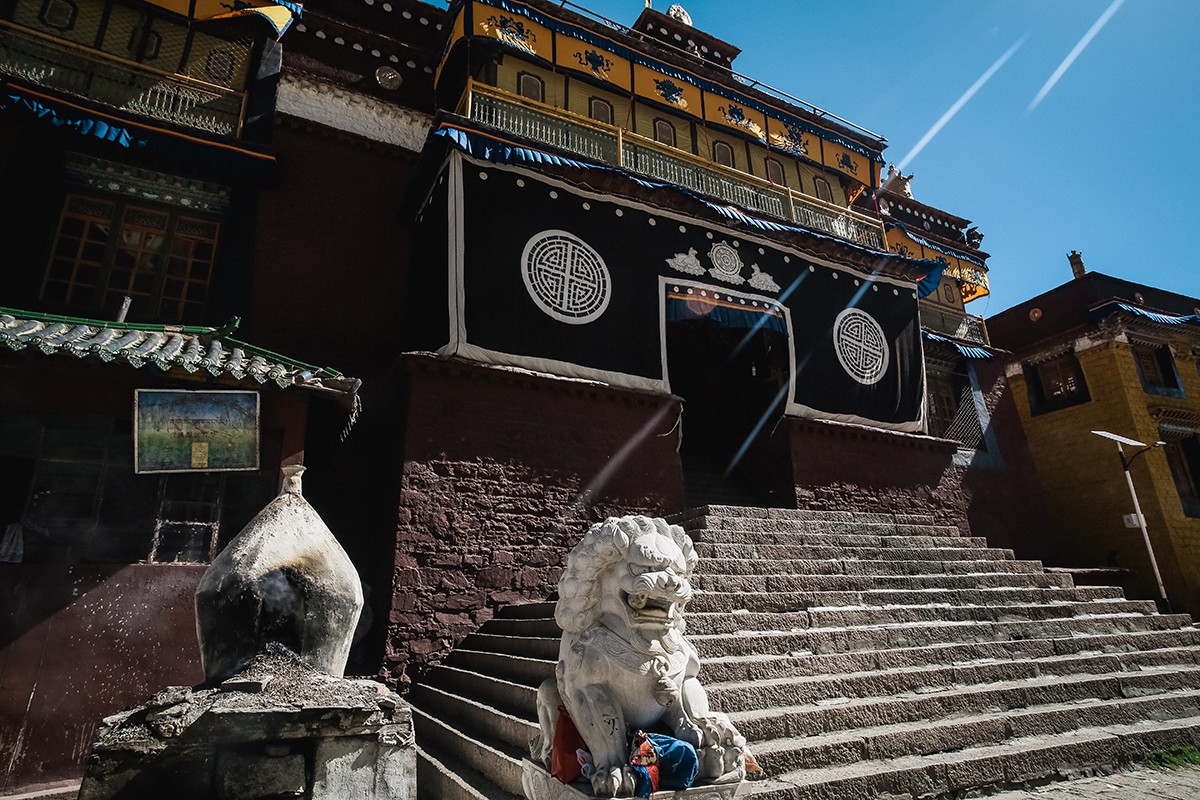
5. After making ritual offerings to regional guardian, the first Karmapa laid the monastery, which subsequently lived about a thousand monks.
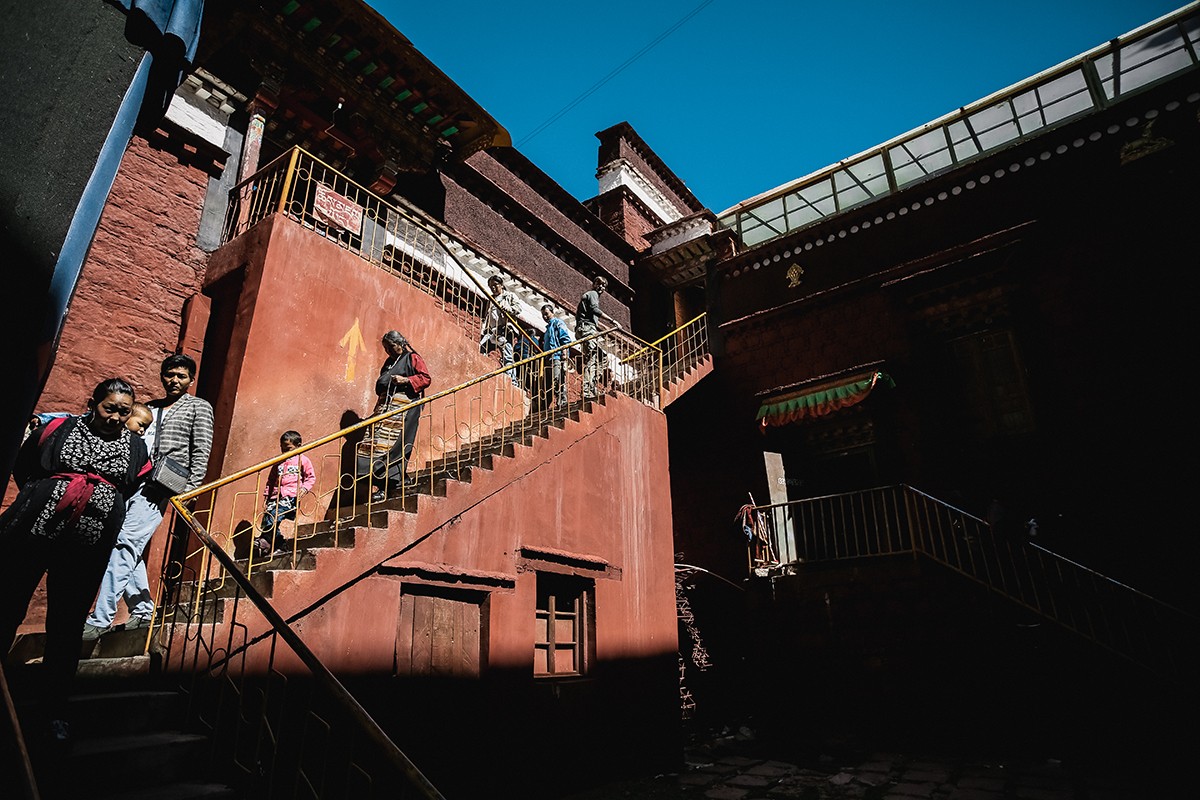
6. During the Cultural Revolution '60s, like many other Buddhist holy places, the monastery was destroyed and rebuilt in the' 80s thanks to the efforts of the sixteenth Karmapa Rangjung Rigpe Dorje.
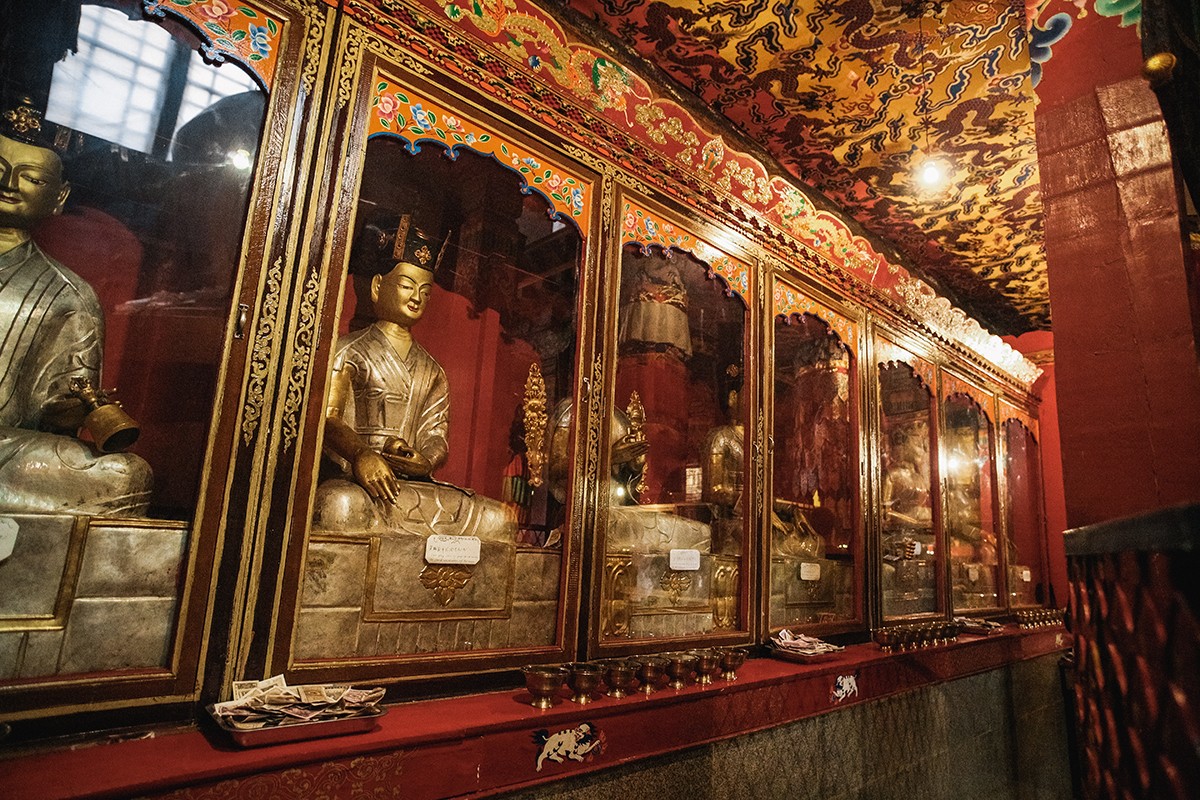
7. Karmapa Lama called Black Hat. It is believed that when a previous incarnation he attained enlightenment, brought the dakinis in honor of this event crown retinue of their black hair.
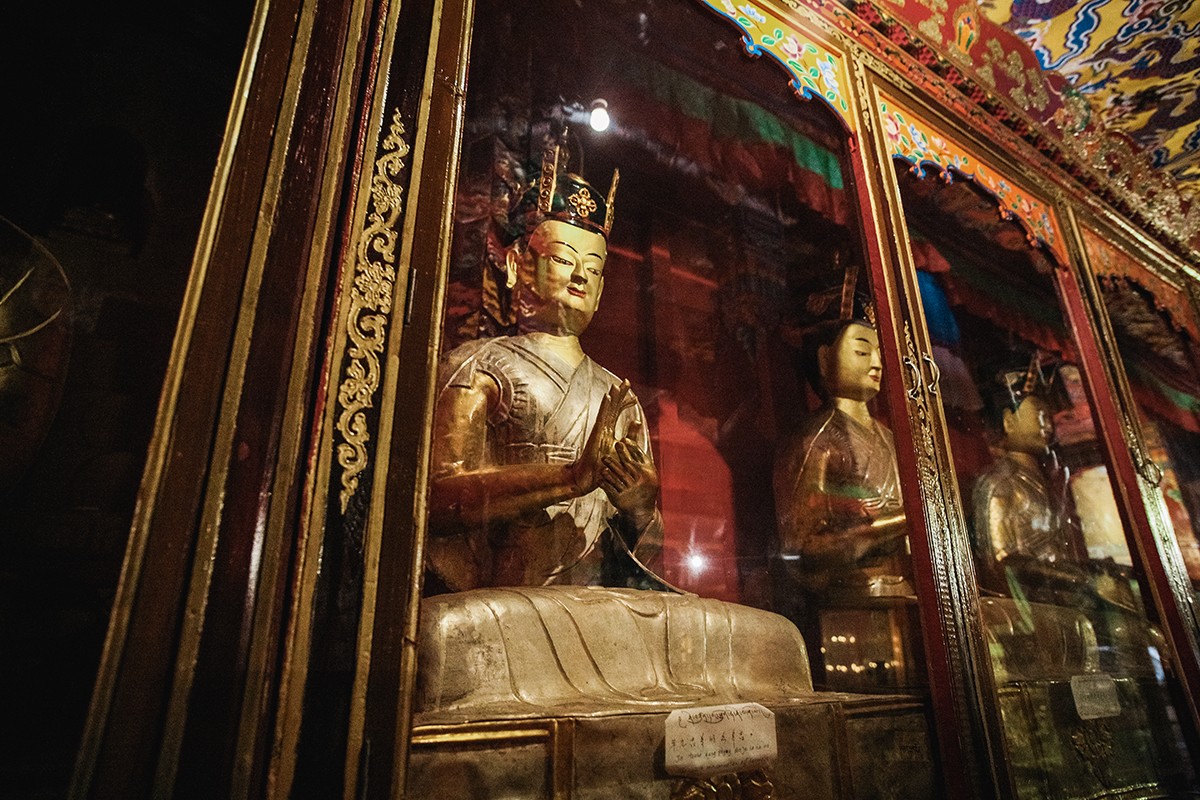
8. Some of the most realized people actually able to see the energy crown. And for the rest of one of the Chinese emperors ordered his craftsmen to make a copy of what he saw over the head of the fifth Karmapa, Deshin Shegpa.
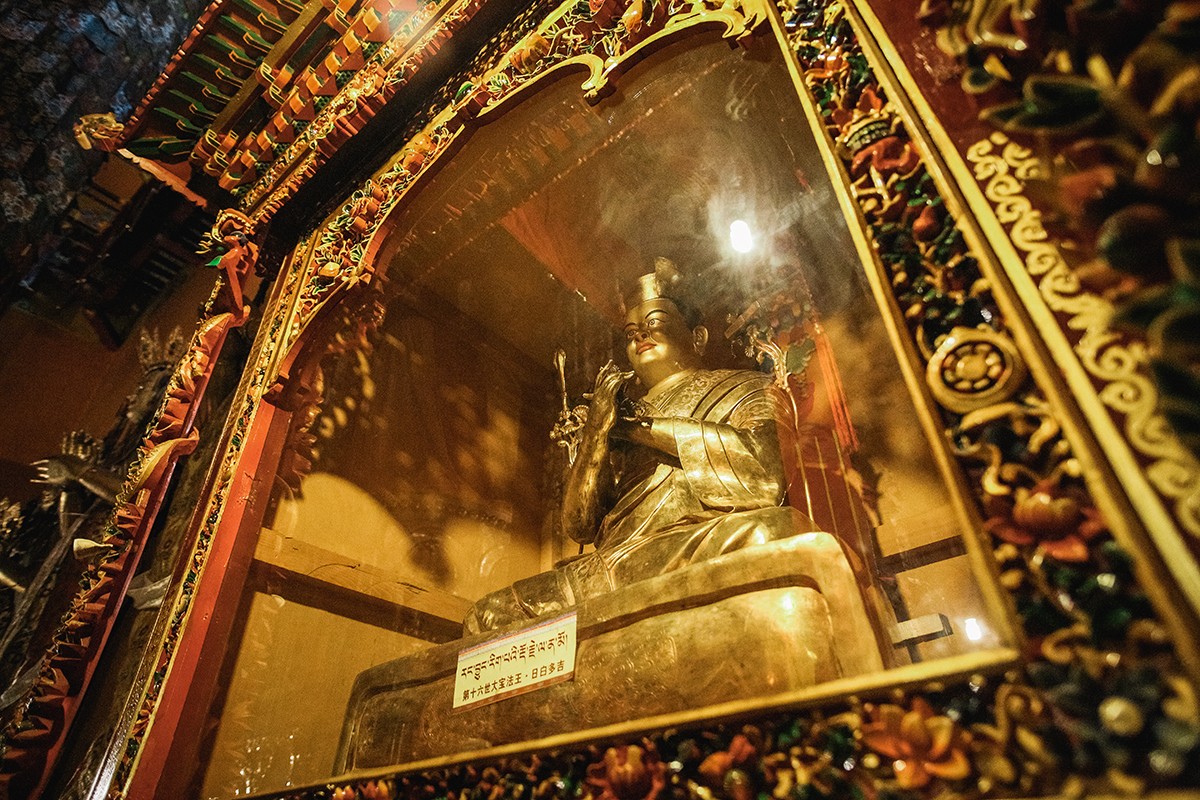
9. In the Kagyu school has always had a lot of yogis, and the Karmapa - the king of yogis.

10. As yogis that befell reality Karmapa able at will to change this reality. Sometimes it looks like a miracle. For example, the seventh Karmapa Chёdrag Gyatso left the imprint of his hand directly into the wall.
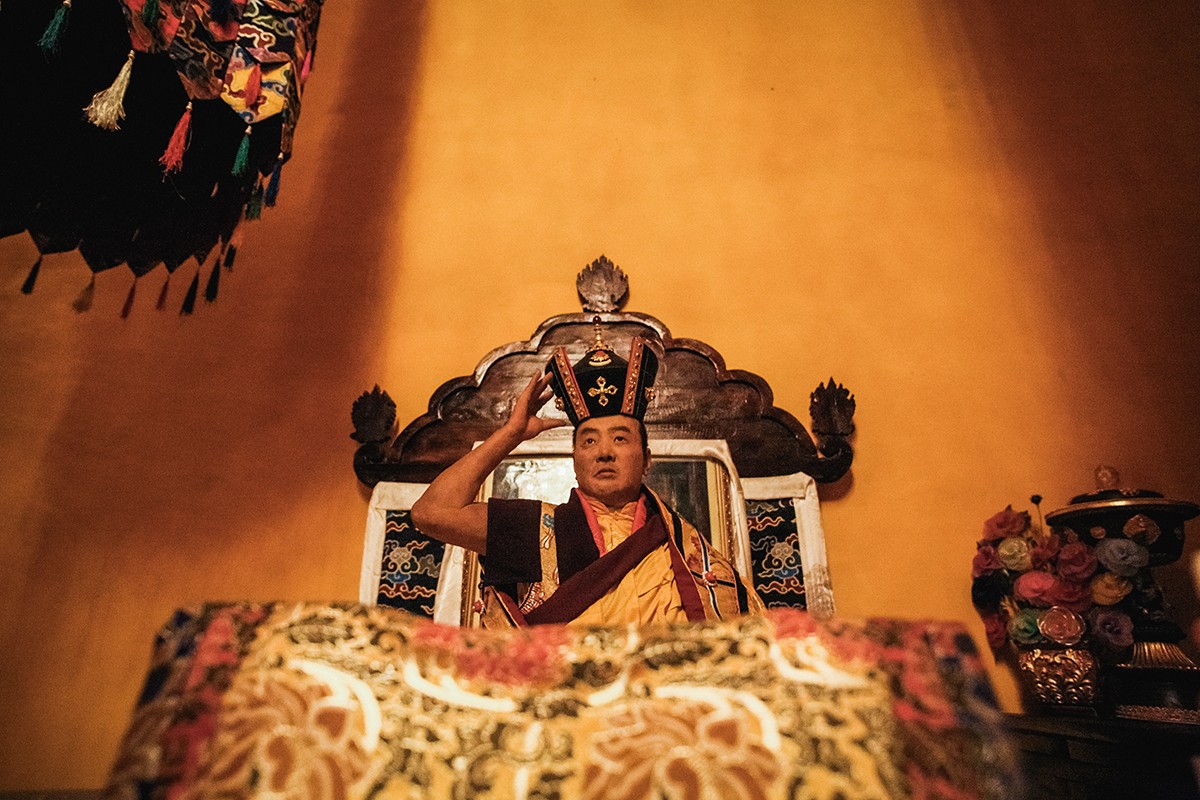
11. Karmapa is the first consciously reborn Lama in Tibet. All his rebirth lived in Tsurphu, until the sixteenth Karmapa. Next to the throne, the seventeenth Karmapa now two candidates selected by different students previous sixteenth Karmapa. Both of them live in India, and the monastery was left temporarily without a head.
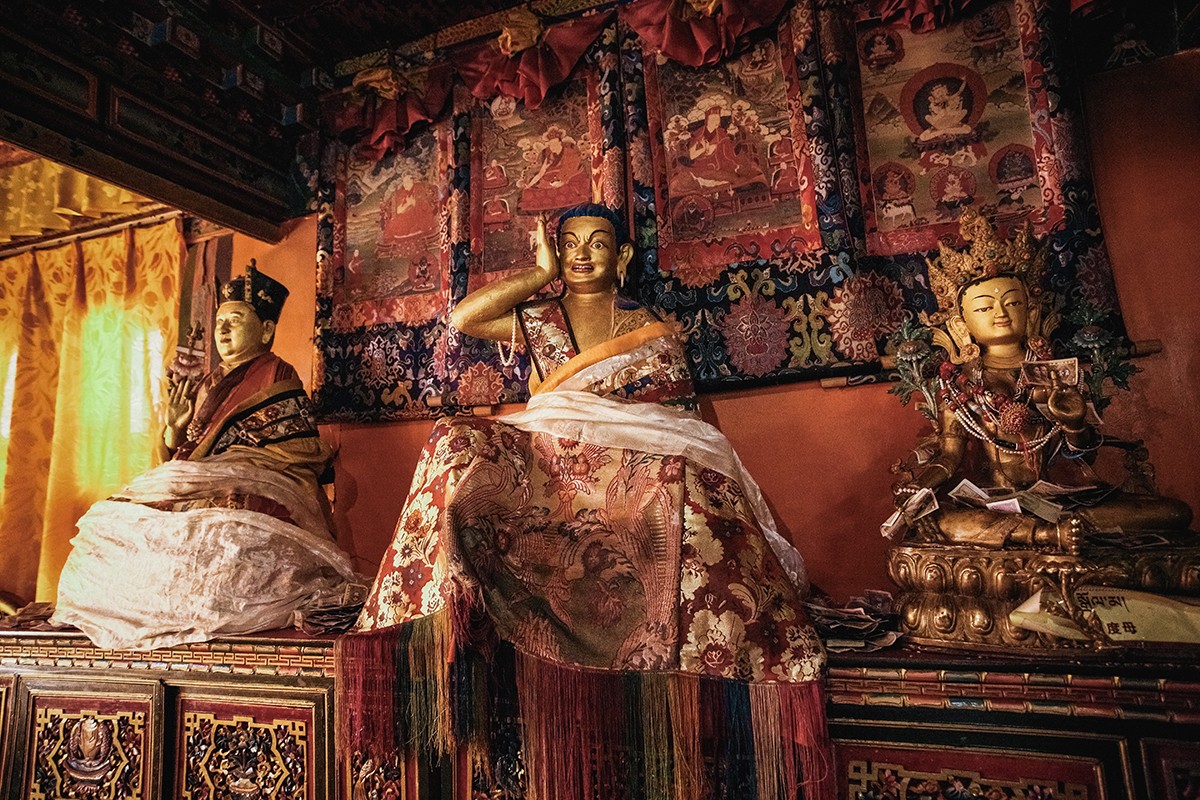
12. Nevertheless, here everything is steeped in the spirit of the Karmapa and other masters of the transmission line, such as Milarepa, in a cave which we were able to meditate at the beginning of the trip. Energy places indescribable!

13. Entirely Kagyu line can be seen in the so-called Tree Sanctuary height of more than 6 meters. It depicts all the main Kagyu teachers and basic yidams, meditation aspects.
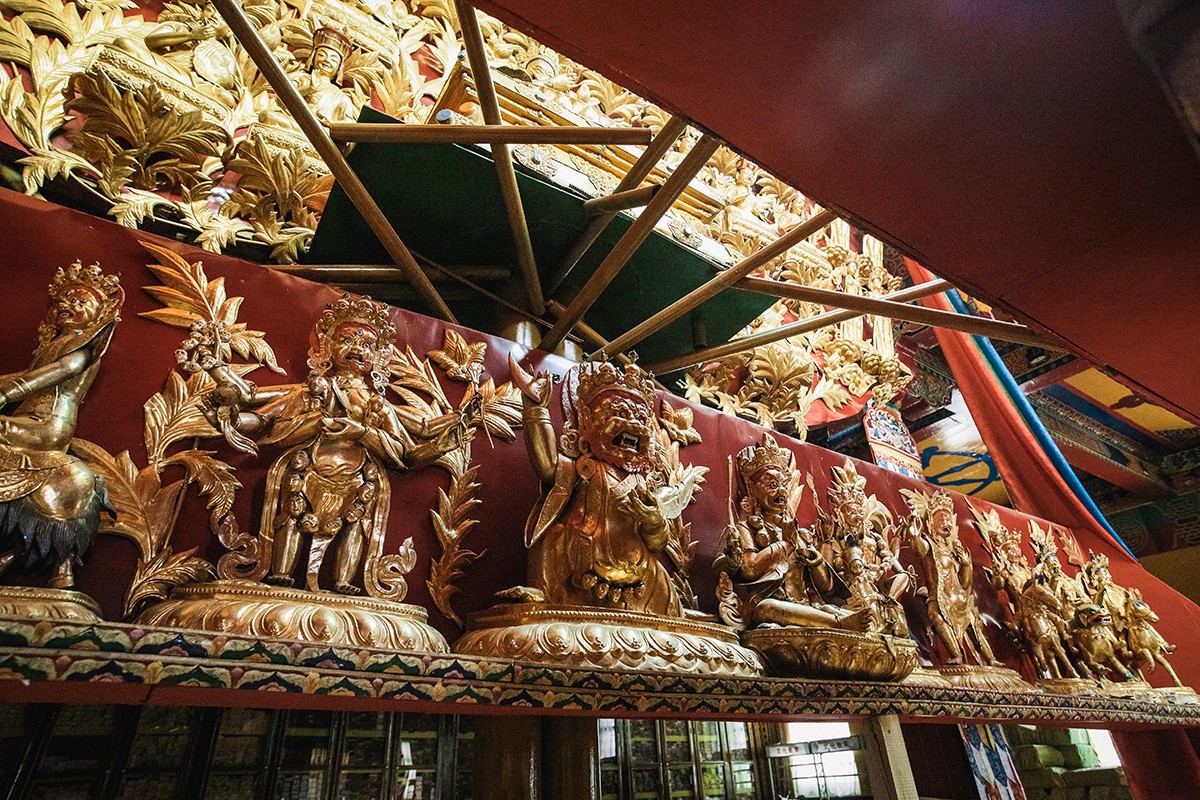
14. At the bottom of the line to protect the defenders, led by a fierce Mahakala.
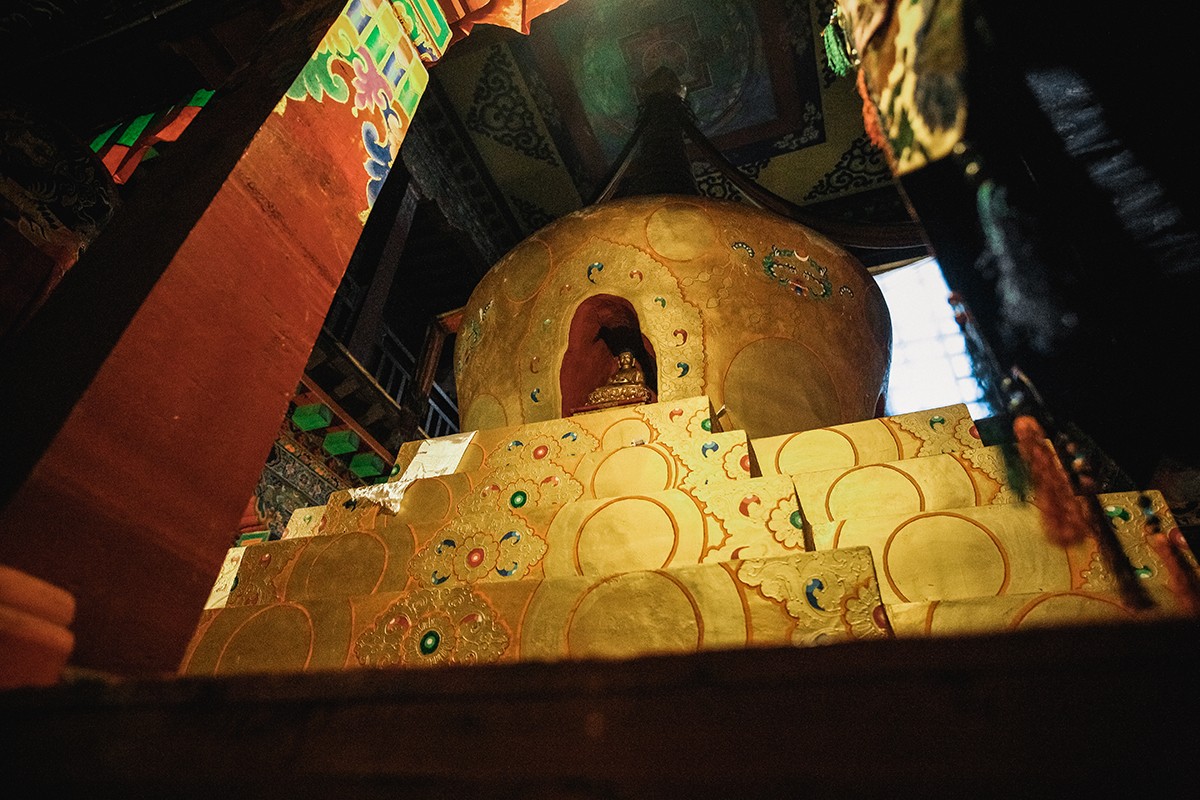
15. In different rooms are stupas and relics from different kudungami kagyupinskih teachers and abbots of the monastery.
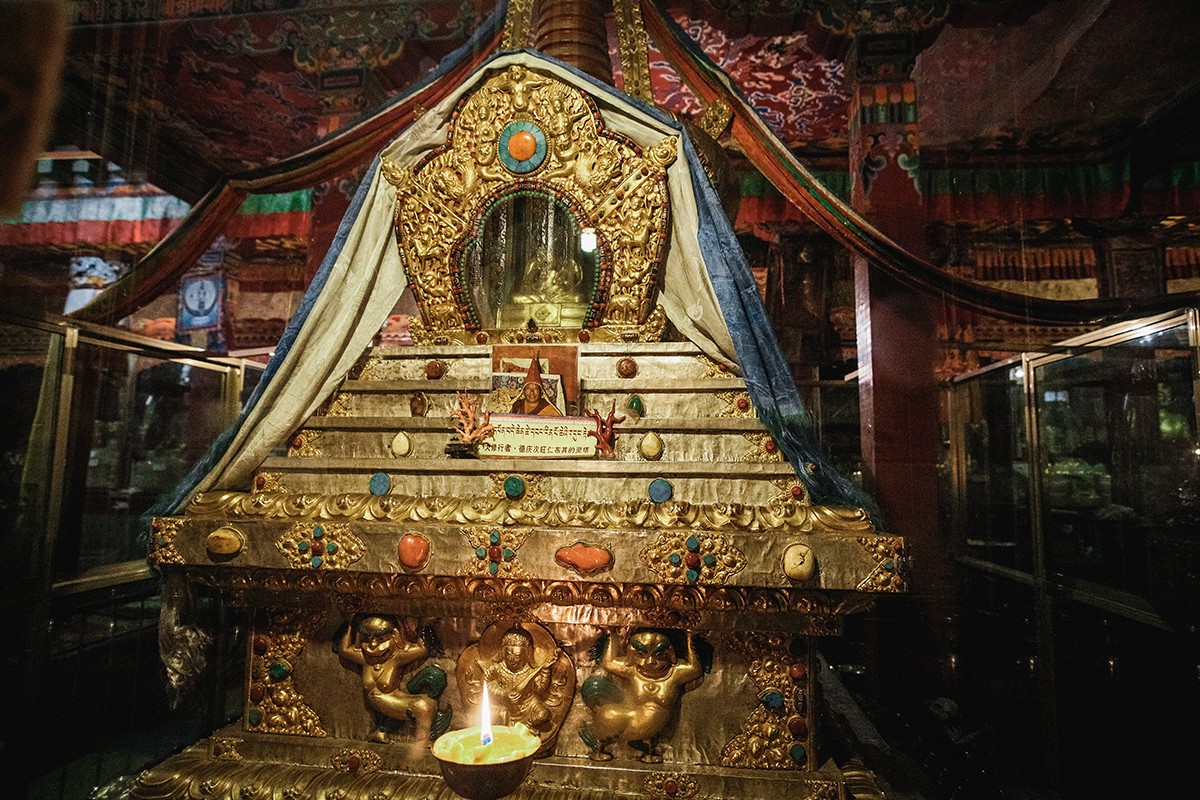
16. There is a stupa with relics of the sixteenth Karmapa.
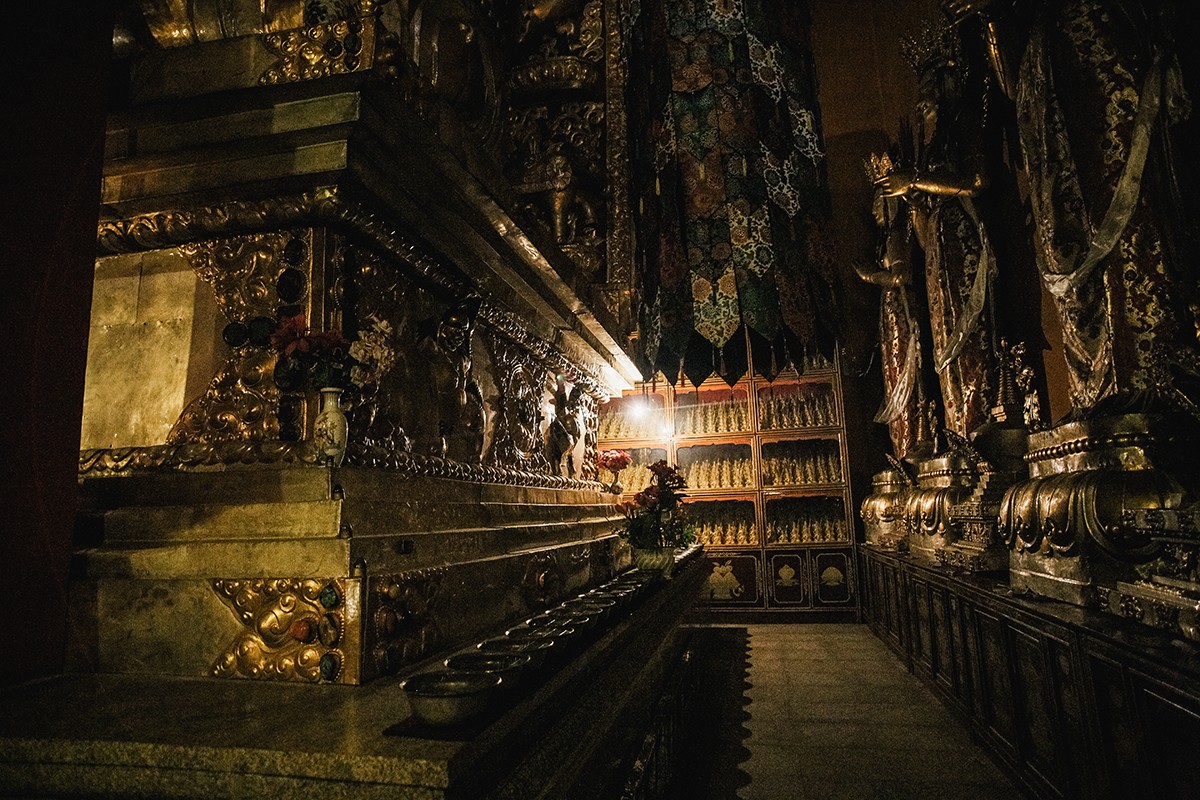
17. So look almost all the rooms of the monastery.

18. In one of the rooms keep the throne, which once sat all Karmapa. And in another, you can receive the blessing of the statue of Sangye UA, a teacher of the eighth Karmapa Mikё Dorje.After the death of the teacher Mikё Dorje made this statue and filled it with relics left after cremation Sangye UA. After this statue flew into the air and hung seven days. It is still called - "hanging in the air."

19. Each room of the monastery is dedicated to a particular Buddha or teacher.
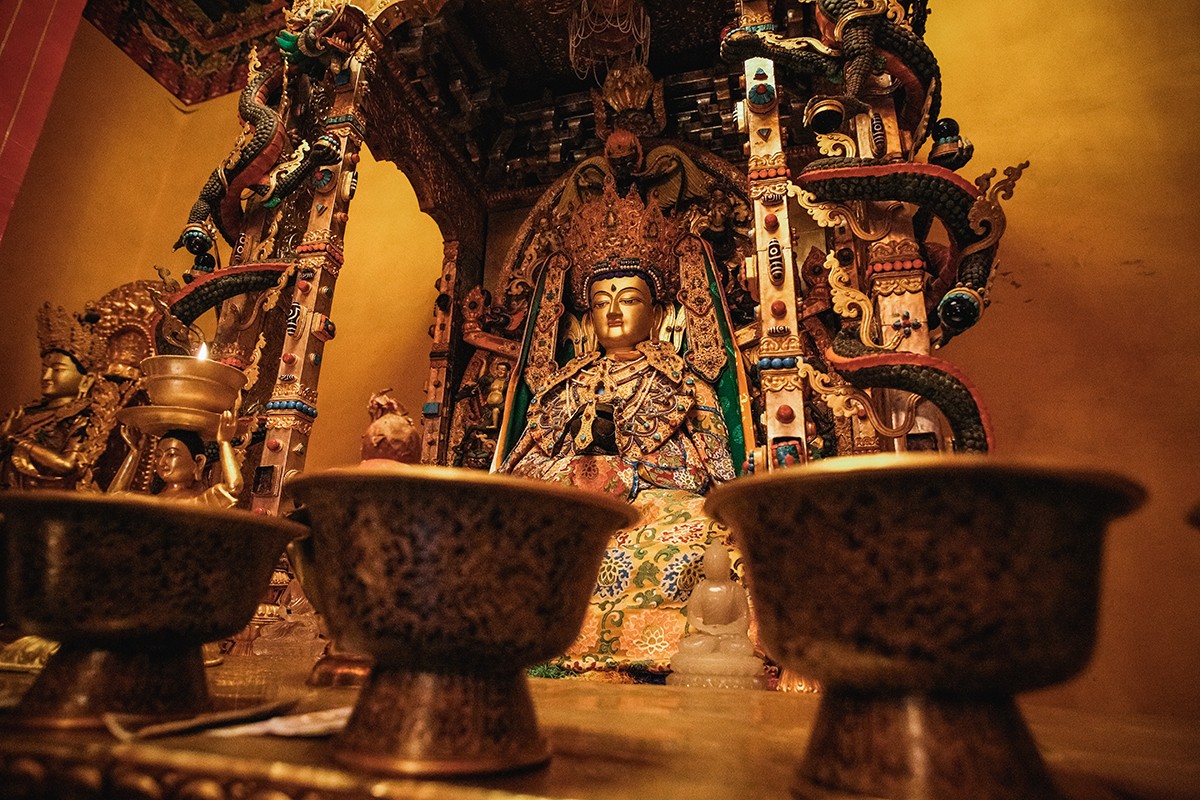
20. If you wish, you can make offerings to the Buddha, which is more like, or with whom there is a meditation bond. You can also donate money to the monk, who is sitting nearby and conducts puja ritual of Buddha.
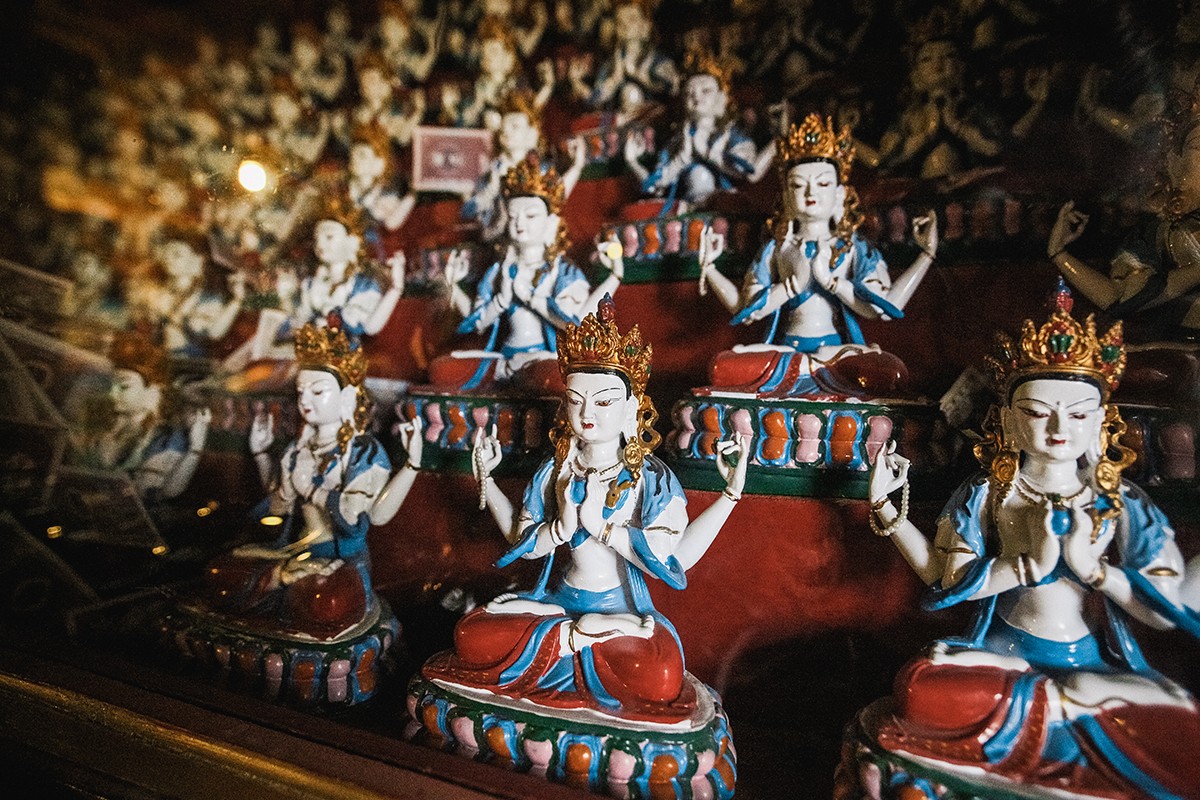
21. There are several rooms that are fully lined with statues of a Buddha like Buddha Shakyamuni, Green Tara, or, as in the photo, Avalokitesvara. This four-armed Bodhisattva is the embodiment of compassion of all Buddhas.
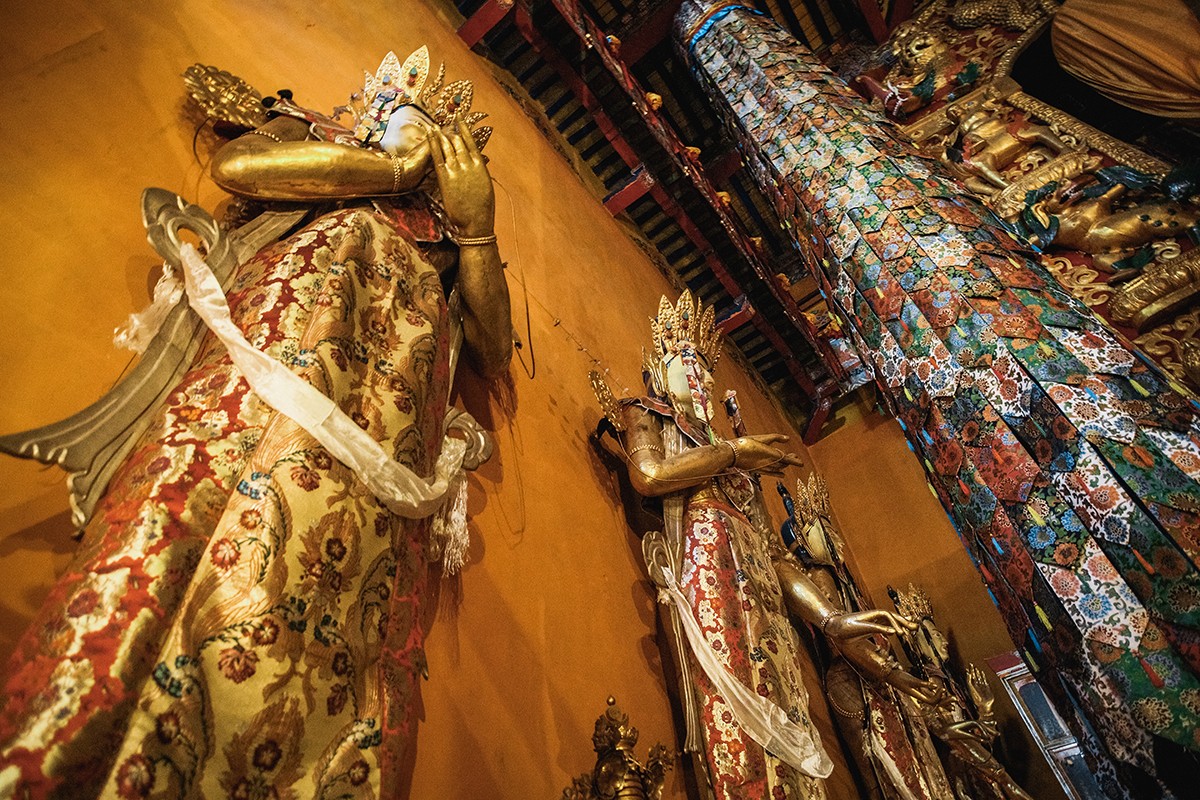
22. In some rooms are enormous statues.
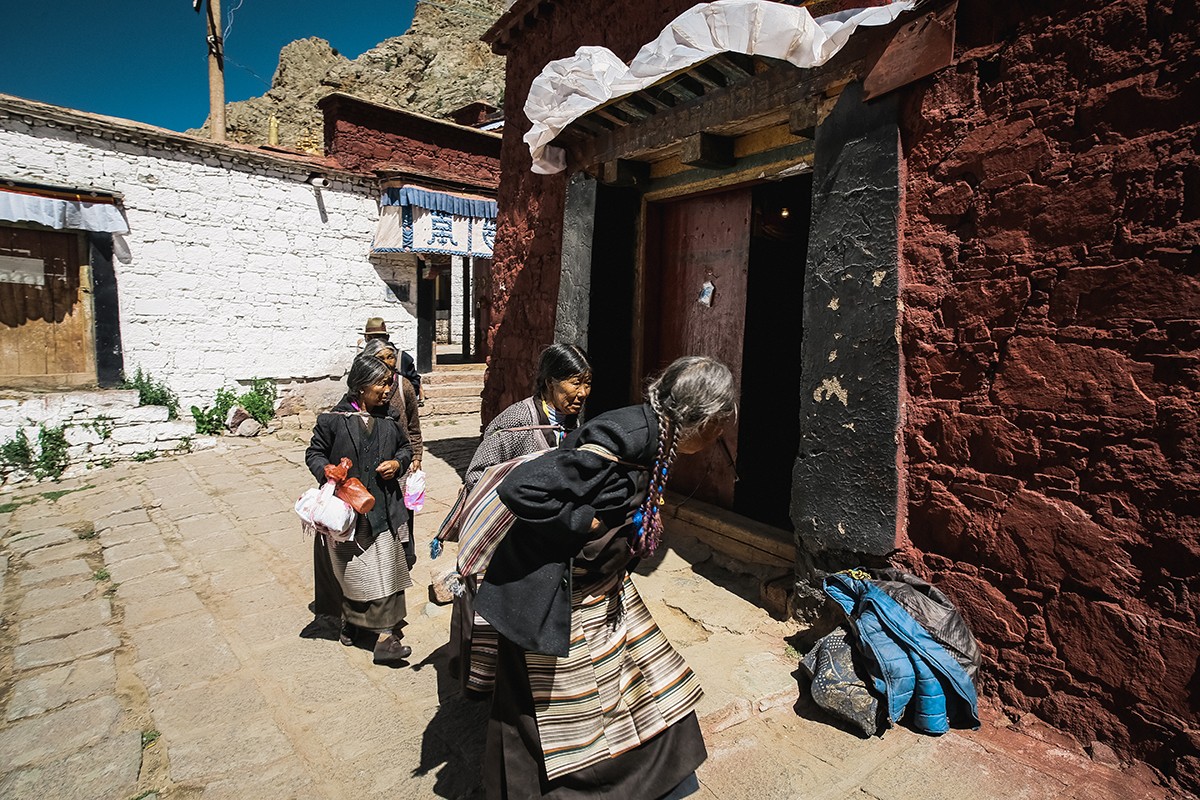
23.
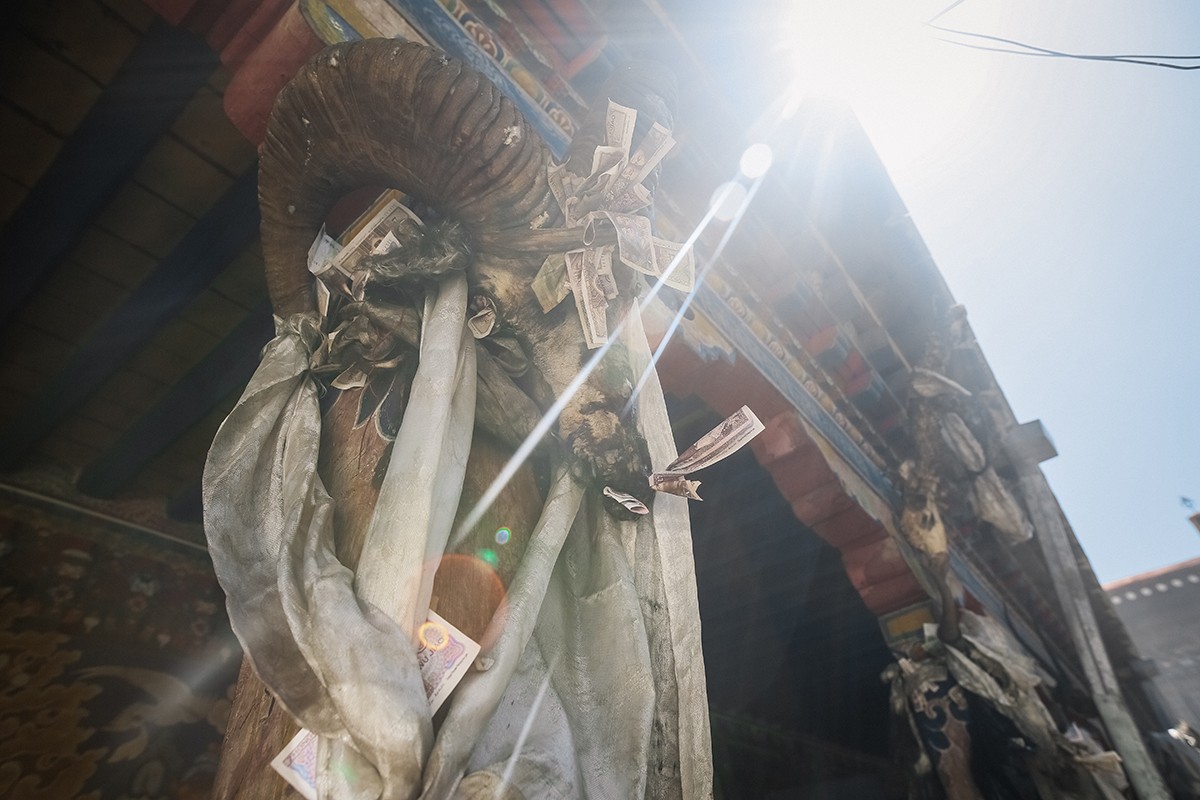
24. This offering local spirits and defenders.
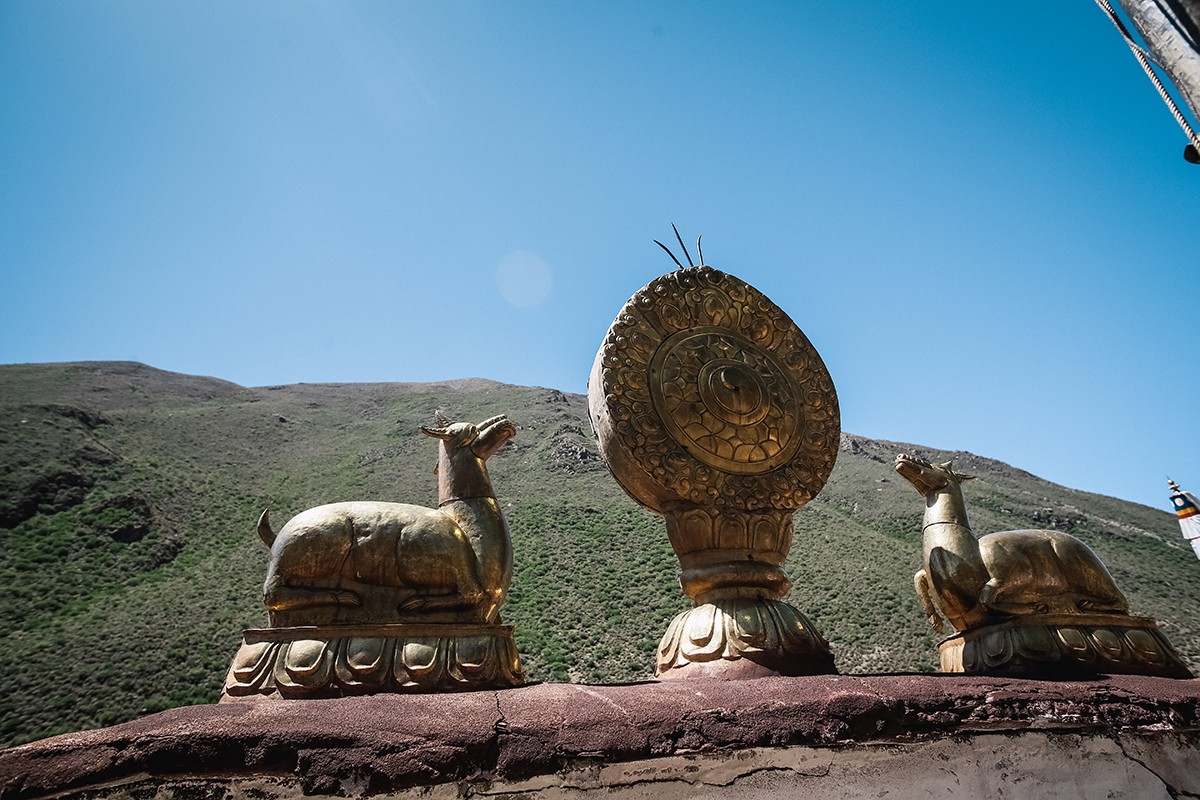
25. After wandering together with Tibetan grandmothers of the monastery, we climbed to the roof to get a closer look at the traditional decoration - two deer and a Dharma wheel. When Sakyamuni Buddha gave the first teaching (or, as the Buddhists, made the first turn of the wheel of Dharma), it was in the Deer Park in Sarnath, India. In addition to the first five disciples came to listen to the Buddha and two deer.
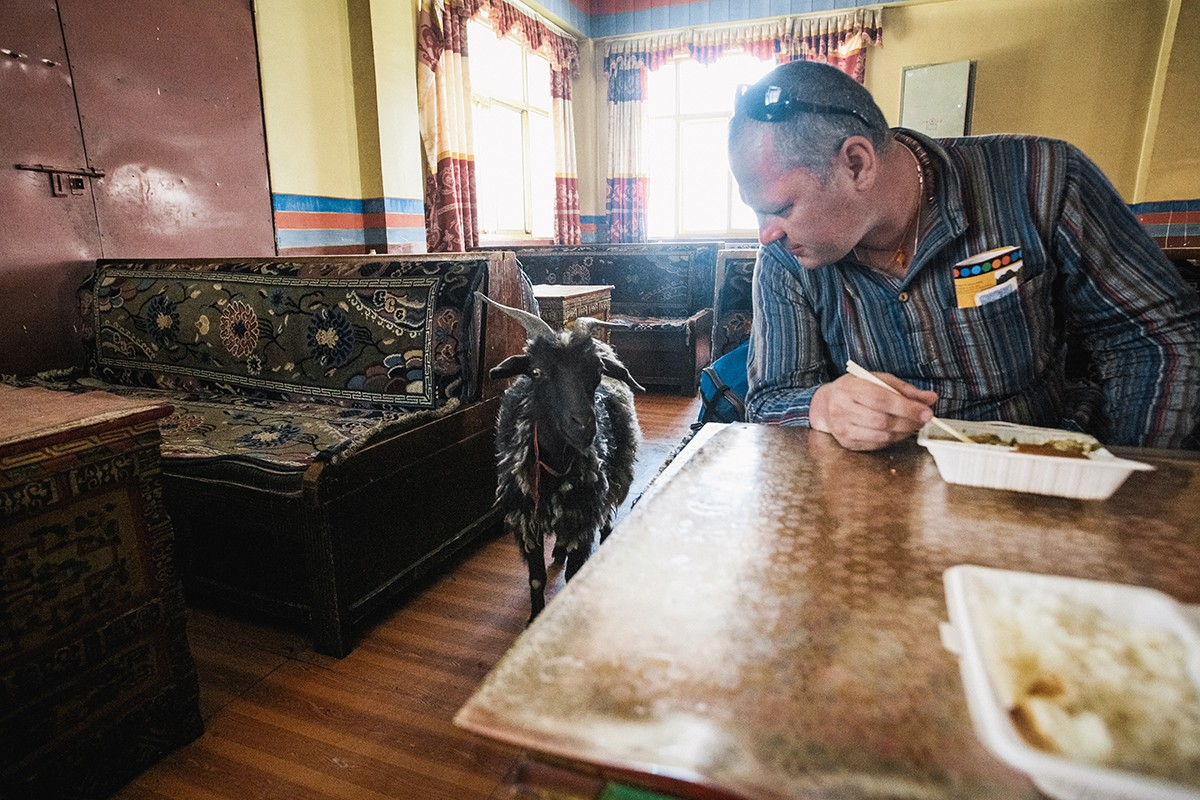
26. And to us in the monastery dining room went mountain goat. What did - did not say, probably in Russian does not understand


27. After dinner, we went to explore the area.

28. The main object of our attention was the stormy river. Known yogi Drukpa Kyunle called her "black". But it seemed to us more white because of the boiling water. They also say that its water flows with the sound of the mantra Chakrasamvara ...
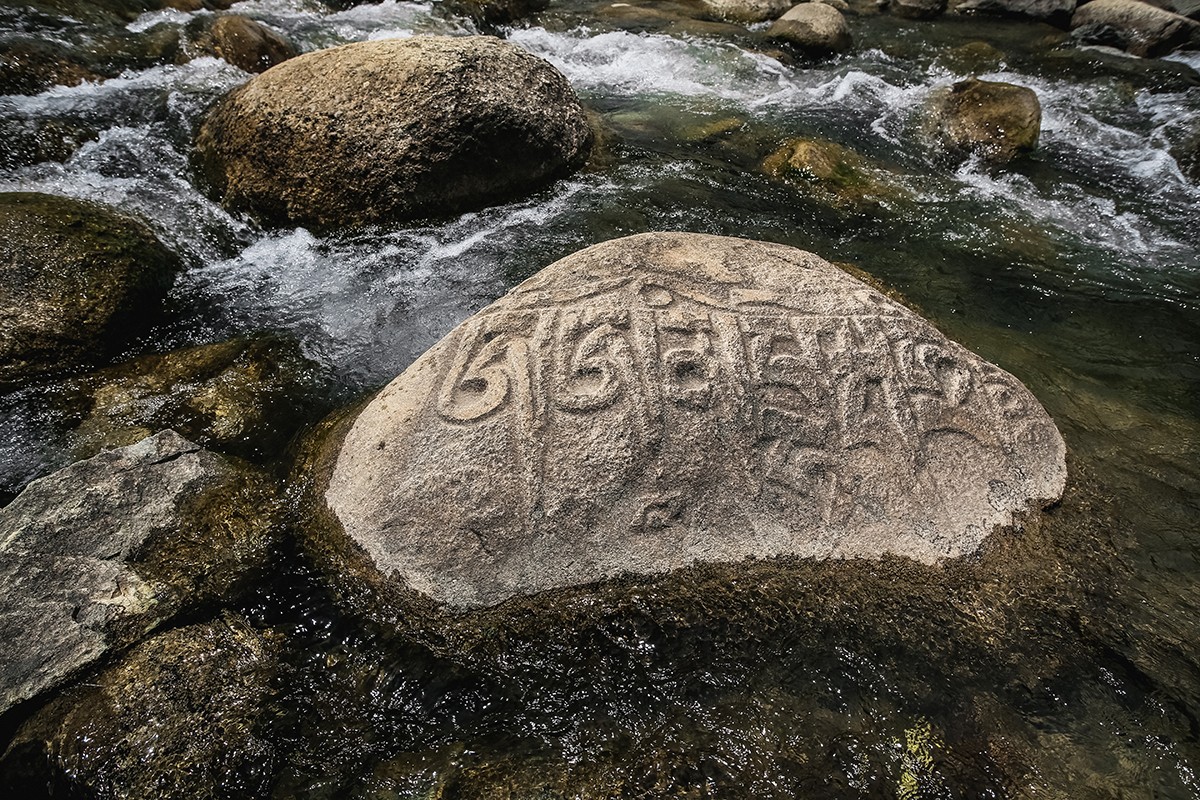
29. The river itself is also important for followers of the Kagyu. She blessed all the Karmapa, and each Kagyupa should always drink water from it. However, our driver, who just owned the school, said that the water you need to drink elsewhere, a few kilometers from the monastery. There's a source that flows into the "black" river. And indeed, when on the way back we stopped there, it turned out that the place is very popular. Tibetans stopped cars to wash, drink some water and take a bottle with you.
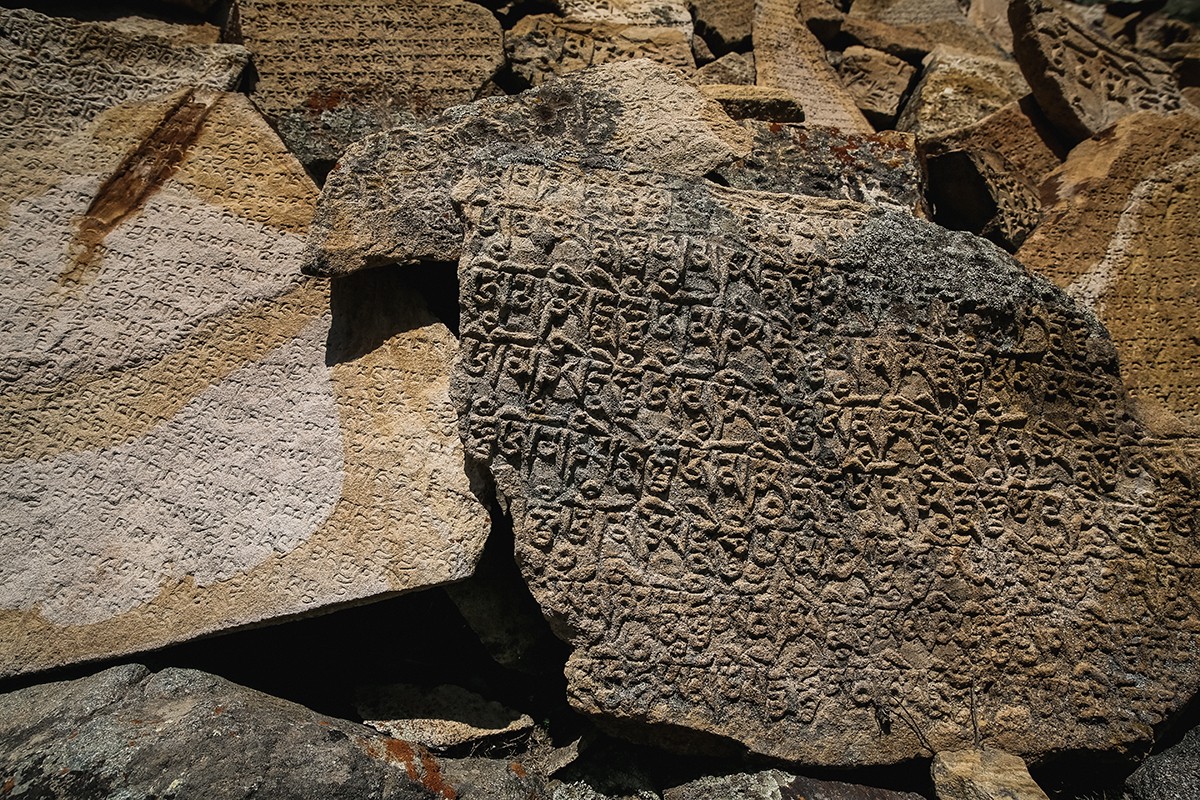
30. In the meantime, we continue our tour of the valley. Everywhere along the road lay the stones carved with mantras and sutras texts.
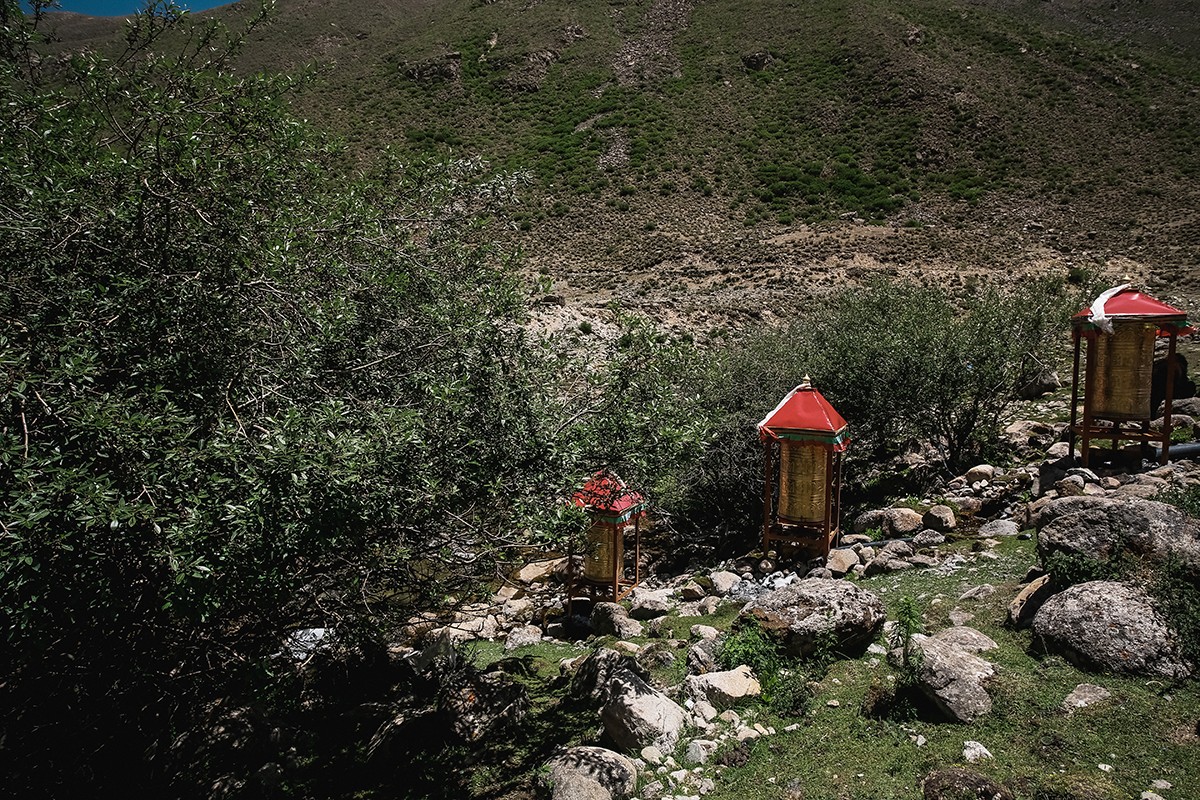
31. Traditional prayer drums are also present, but these cool themselves at the expense of the river and the wind.
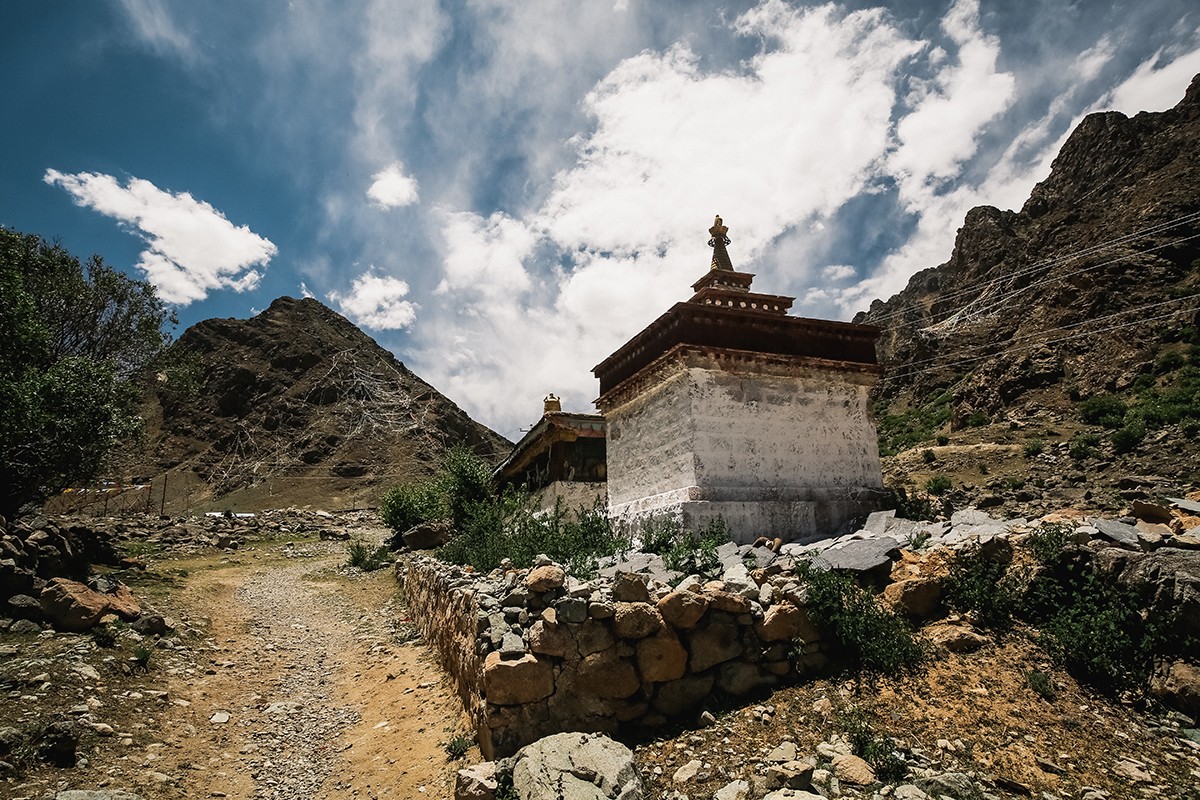
32. A little further, we found the old sanctuary.
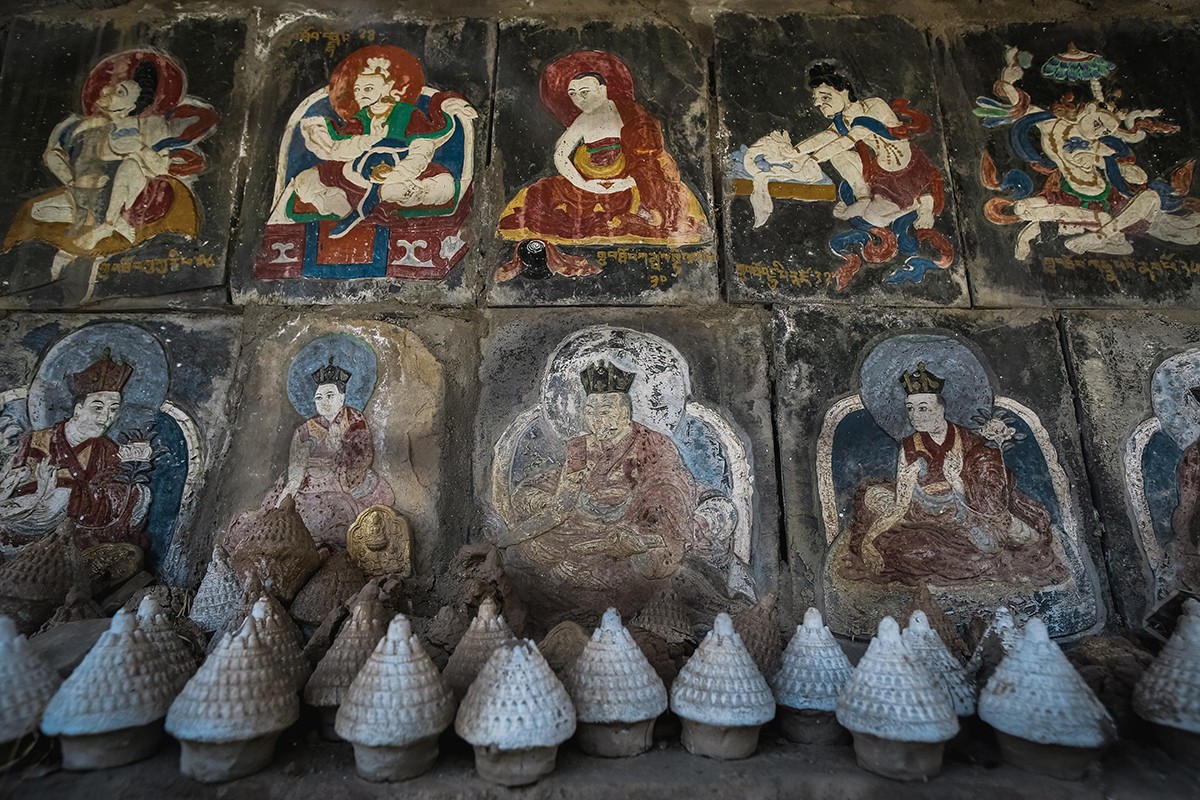
33. The walls are painted with images of the Buddha, the Indian Siddha, the Karmapa and other kagyupinskih teachers.
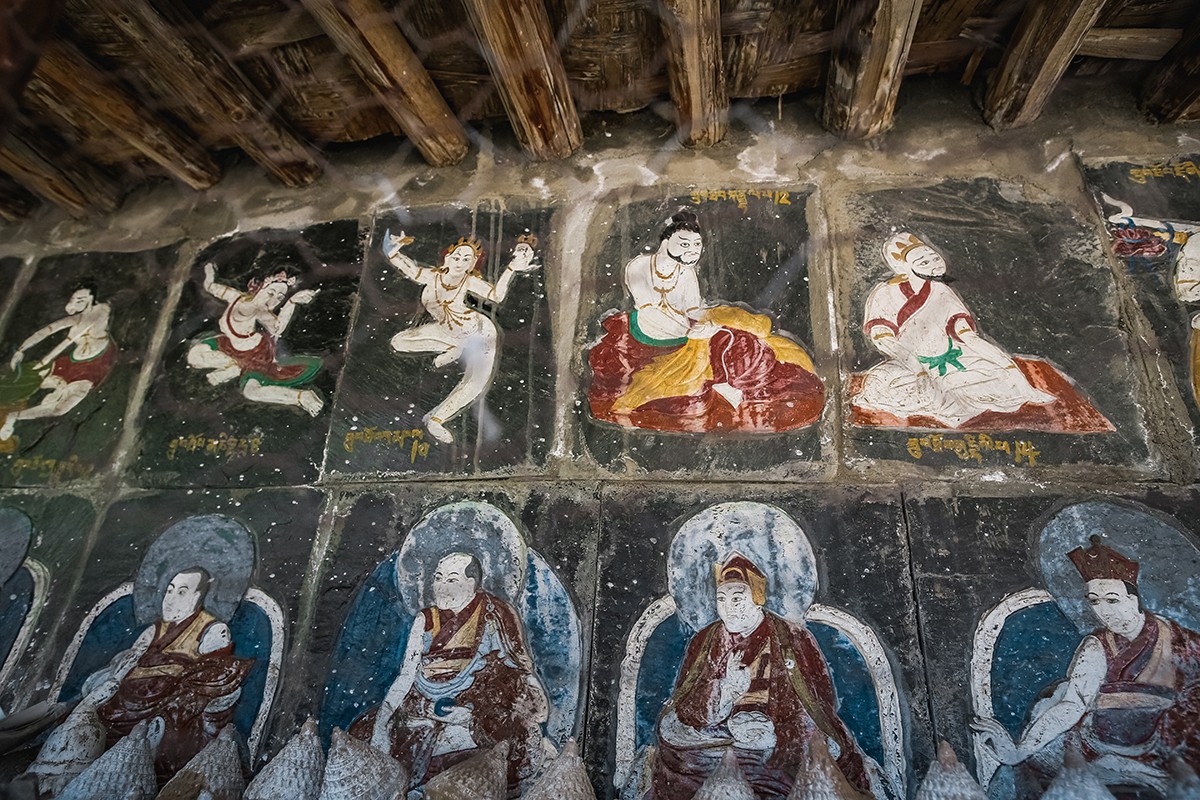
34.
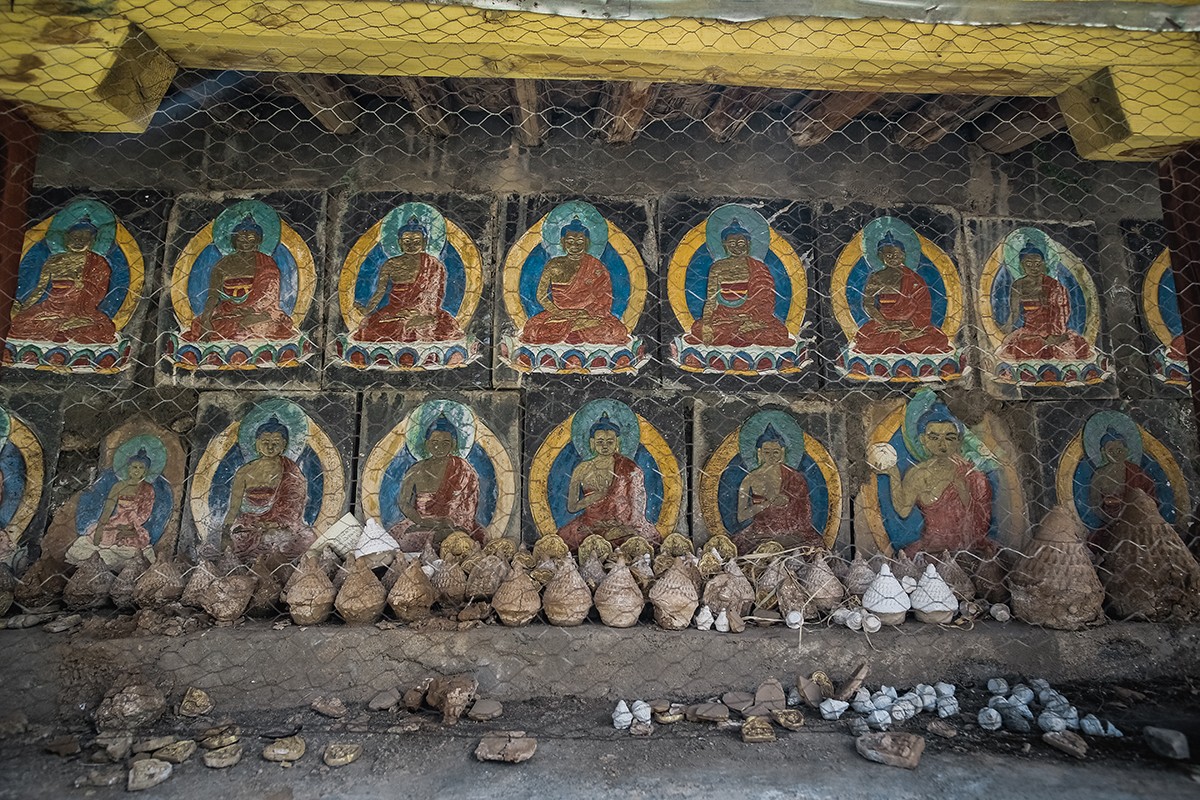
35.
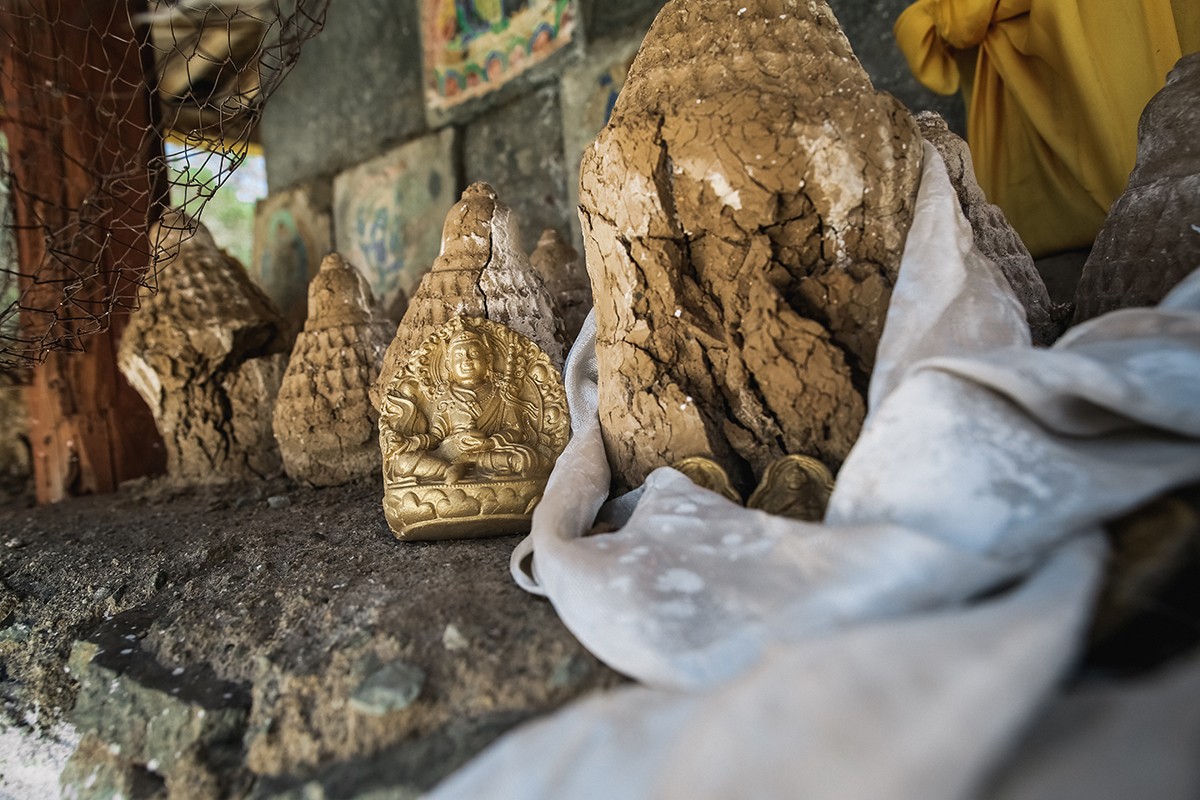
36. Immediately lay "tsa-tsa" offerings made of clay with special metal molds. Some of the offerings were quite old, the other - newer.
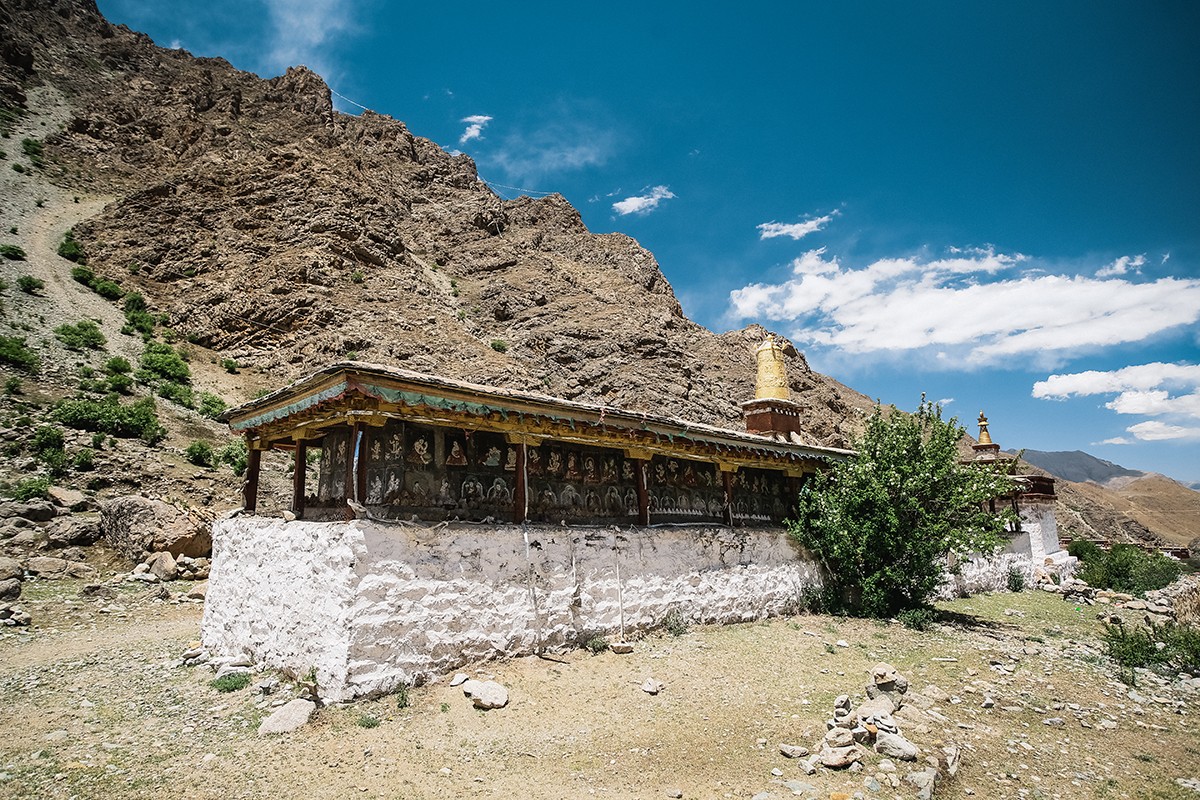
37.
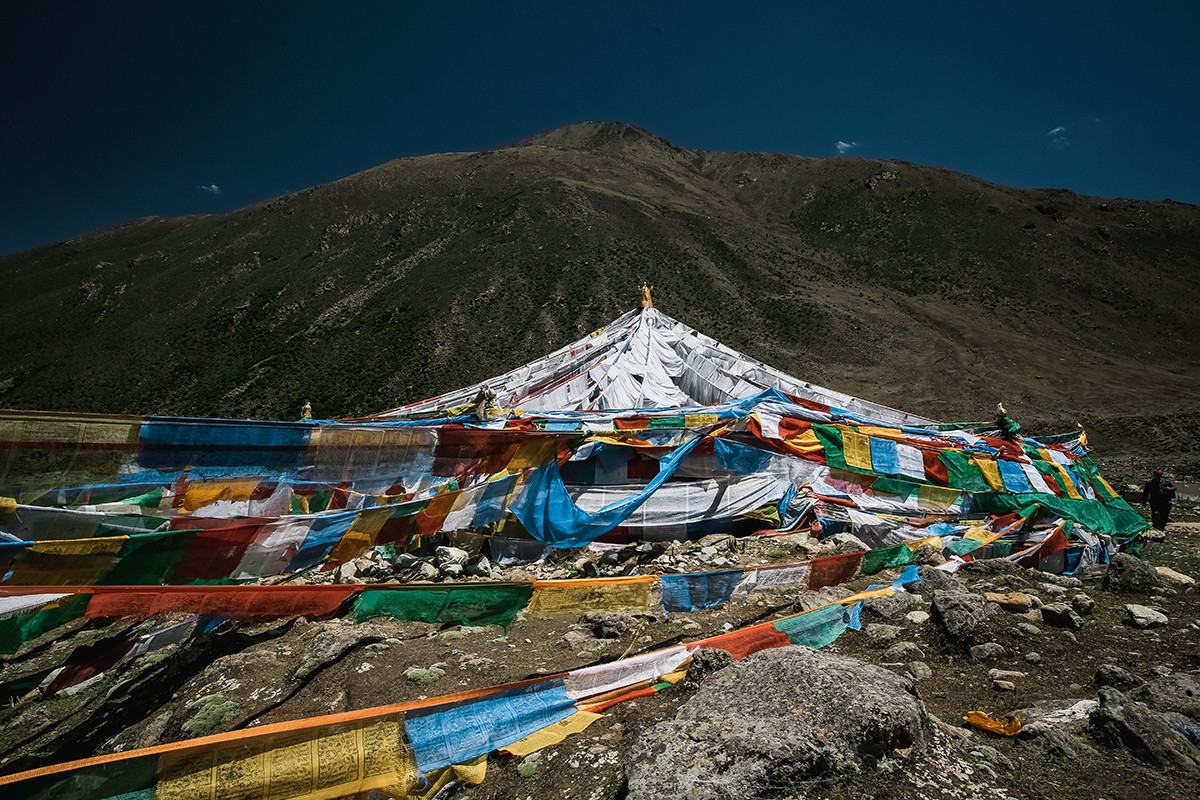
38. Examine the sanctuary, we walked another half a kilometer and reached a point from which tourists start trekking to the monastery Yangpachen through pass Lasar-la.
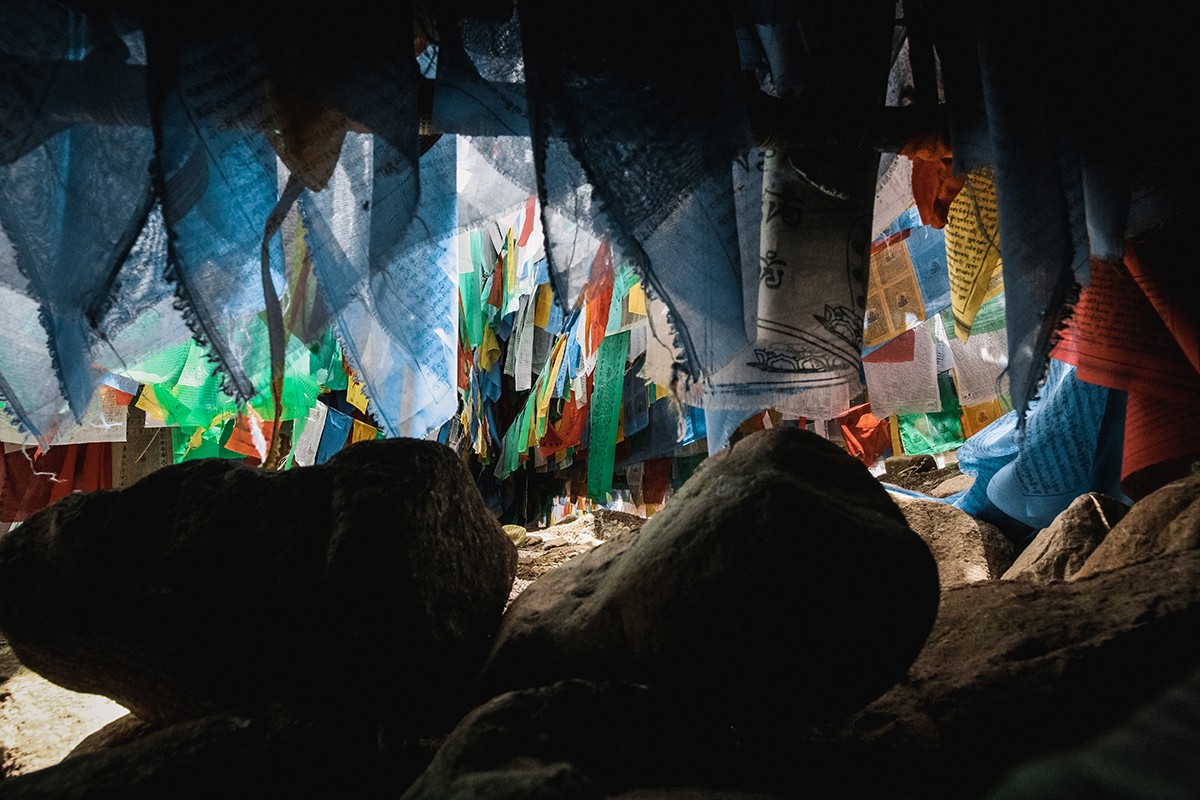
39. Inside the tent of prayer flags looks fantastic.

40. View of the monastery from the roof.
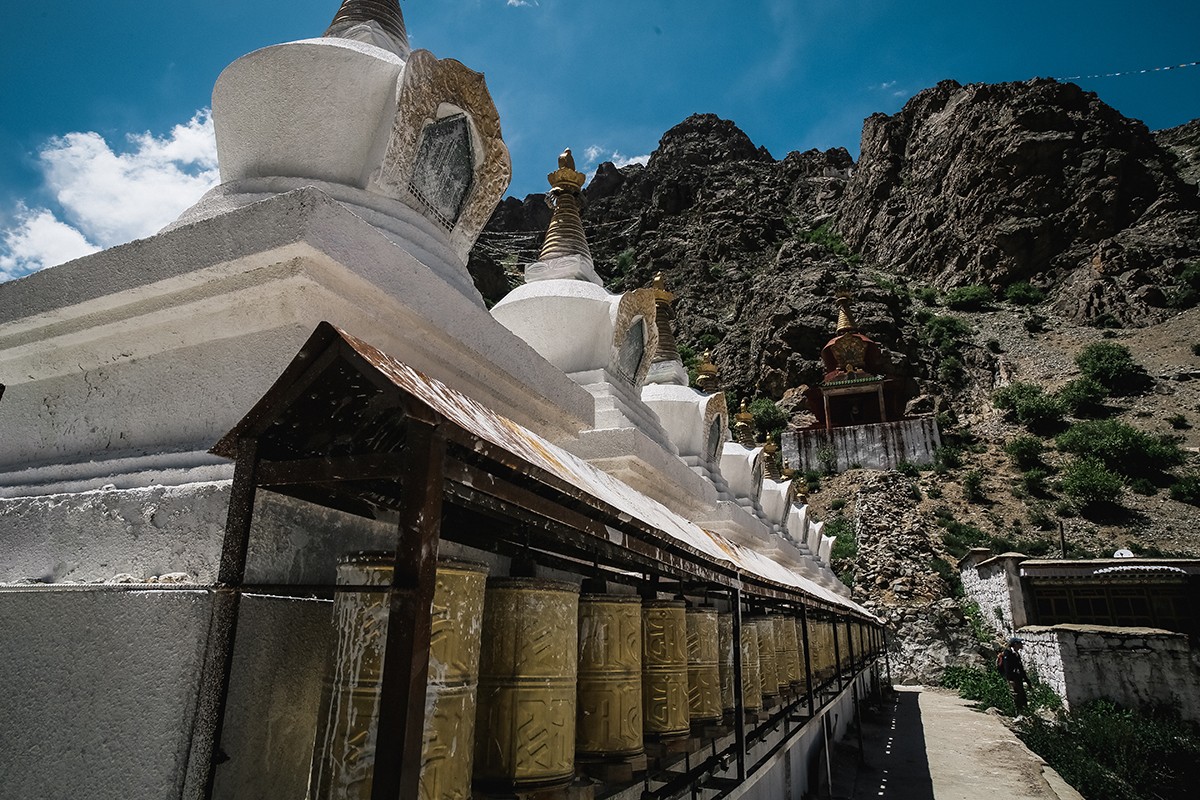
41.
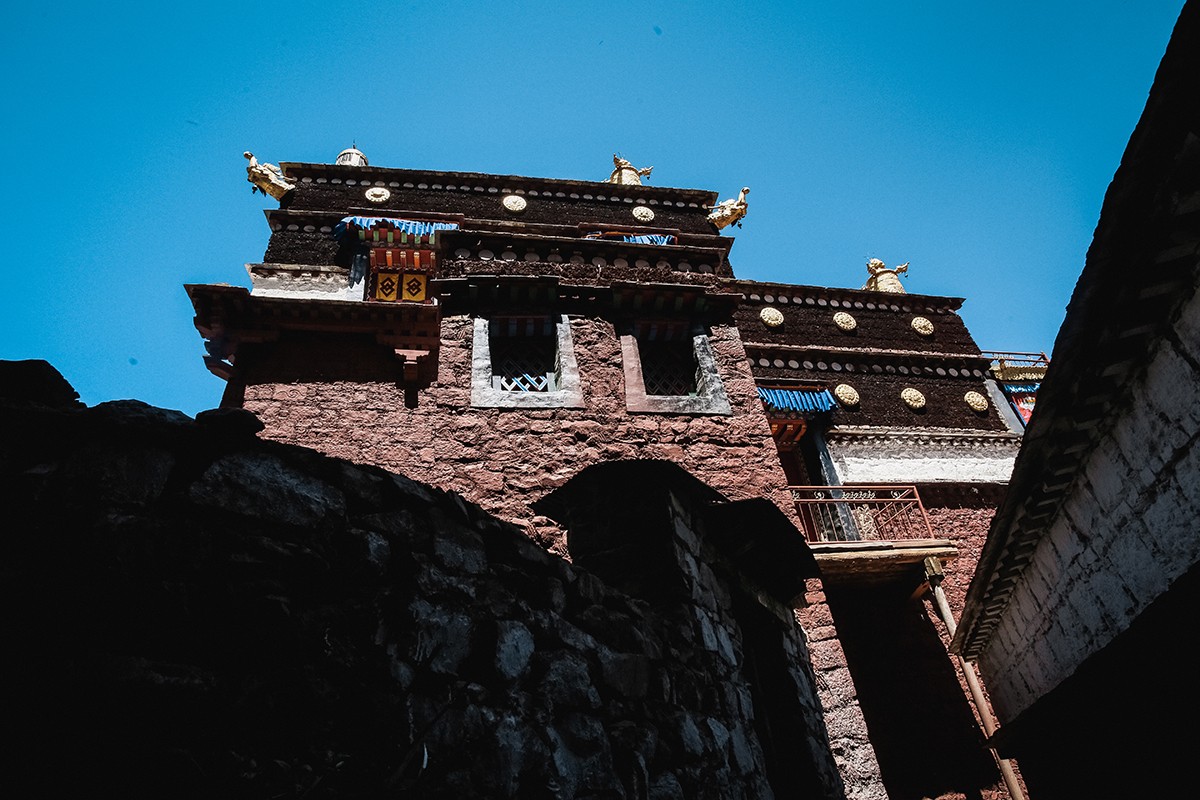
42. On the way back we saw how the monks live. The community here is small, but pretty neat residential houses. Having bought the last souvenirs, we went back to Lhasa.
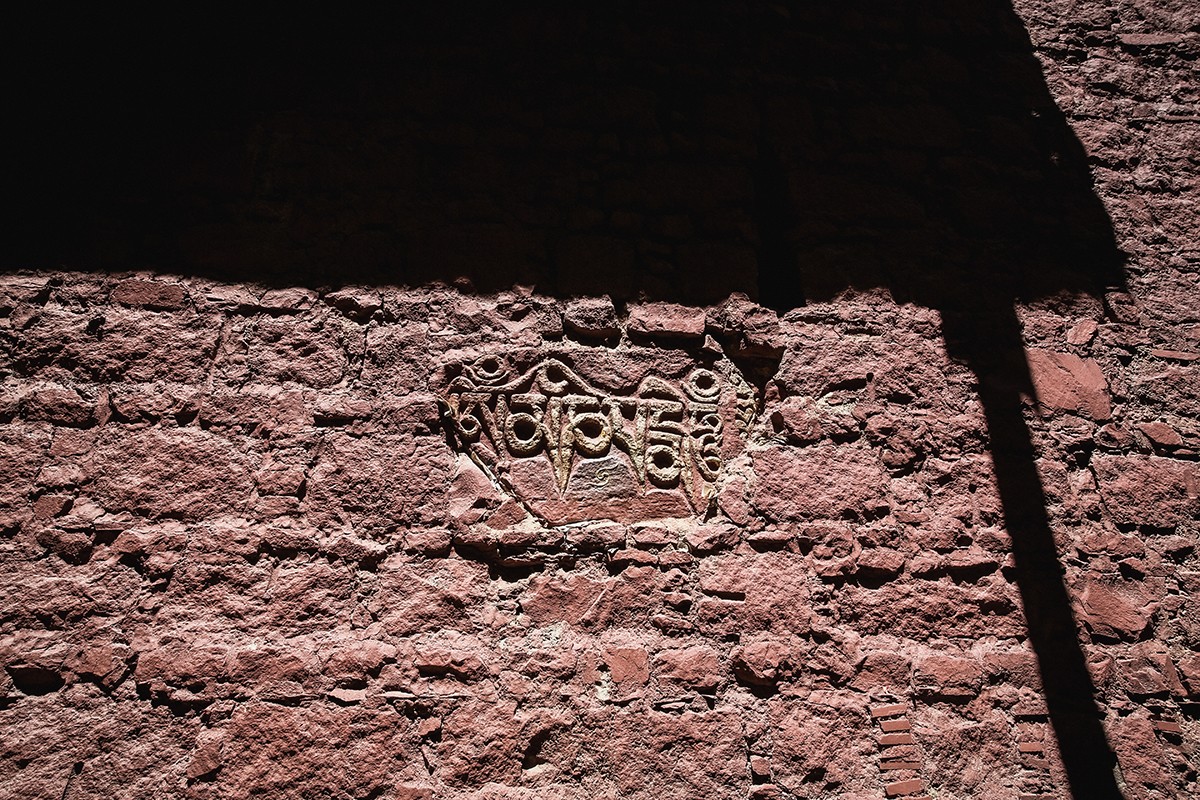
43. Travel to Tibet can be infinite. Wander on foot or drive a car - all the same. Everywhere you will find full of wonders place, wonderful nature and wonderful people. Tragically, the next morning we had to leave the country with snow - we waited for the plane to Kathmandu. Two weeks in Tibet passed quickly, and left a great desire to come back here again.

